
Literally encompassing millennia of human settlement, there are very few cities around the world with a turbulent past such as Belgrade, with its history dating back as far as pre-historic times. Serbia’s capital is not only the country’s largest city and economic engine, but also the regional center of the entire western Balkans, a legacy from the era it served as the capital city of Yugoslavia. Due to its strategic location along the Sava and Danube Rivers, Belgrade was conquered and governed by numerous foreign powers throughout its existence, leaving a clear mark on every facet of the city, ultimately defining its character, enriching it with countless historic sites, annually flocked by a growing number of visitors. However, if you wish to dodge the swarms of tourists, there is no shortage of more secluded places to explore, some of which were covered by me during my last visit to the city.
It’s difficult to overstate how much Belgrade’s role as an imperial crossroad shaped its current architectural heritage and urban layout, reflected in the hodgepodge of quarters and buildings from different periods of time, ranging from the Ottoman rule and Habsburg Monarchy to the more recent Yugoslav union. Strolling throughout the city’s streets will most certainly award you with plenty of eye-catching sights, as no matter where you opt to go, it never gets monotonic.
Perhaps the best way to fully experience the city is not to solely focus on each area at a time, but to cross several neighborhoods in one day, witnessing firsthand the sheer contrast between Belgrade’s distinct parts.
The modern-day city center is largely dominated by a medley of architectural styles, some of which are older and ornamental, influenced by neighboring European countries, while more recent ones tend to resonates with Yugoslav socialism, featuring functional and orthogonal facades.
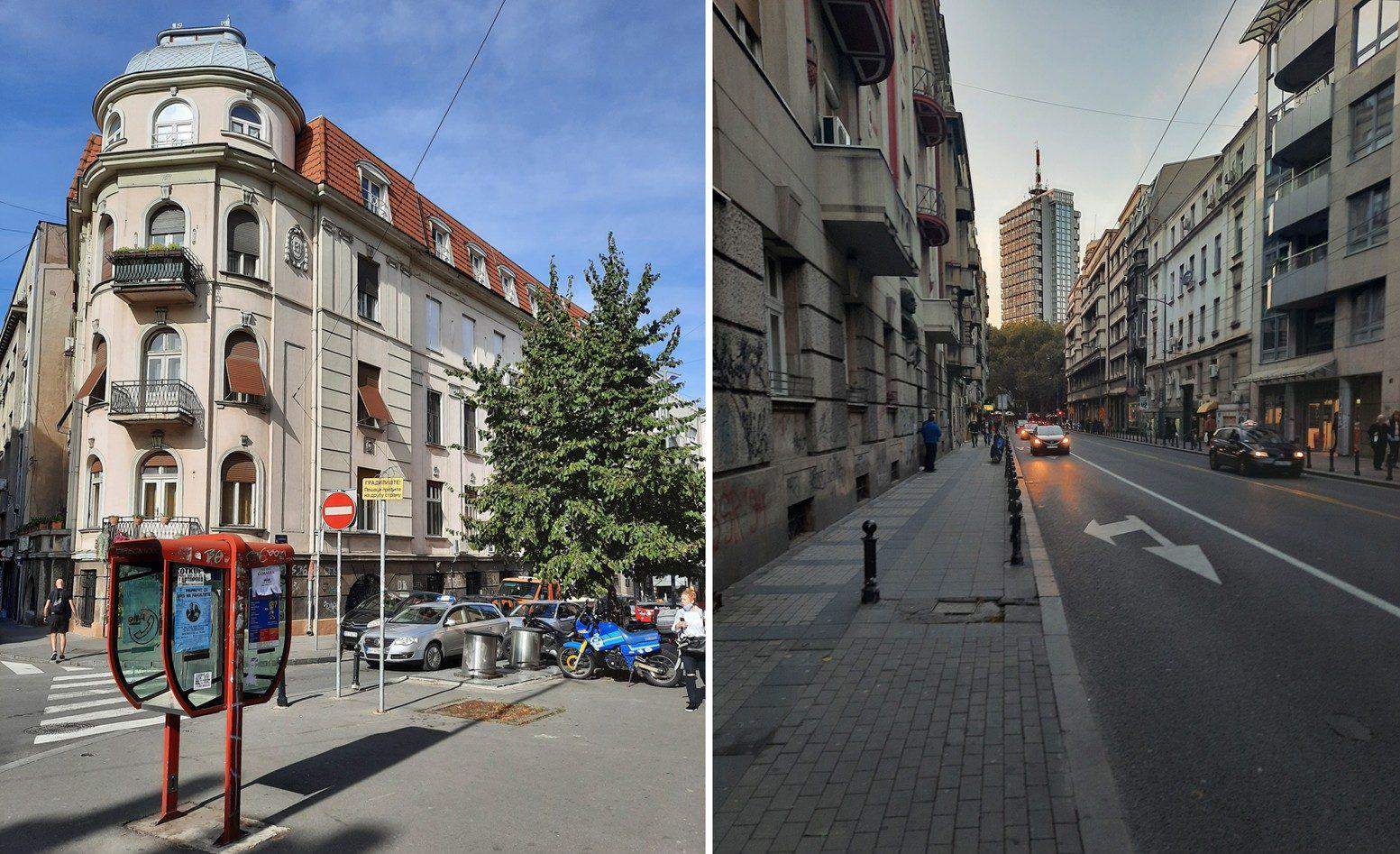
photography by: Omri Westmark
The vast majority of buildings in Belgrade are low-rise, ranging between 3 to 8 storeys, however, recently it’s getting less and less rare to bump into a skyscraper.
Unlike contemporary skyscrapers, Palace Belgrade or Beogradjanka (Belgrade Girl) as it’s unofficially known, was built during Yugoslav time according to modernist principles, elegantly meets the street below with a popular and lively café.
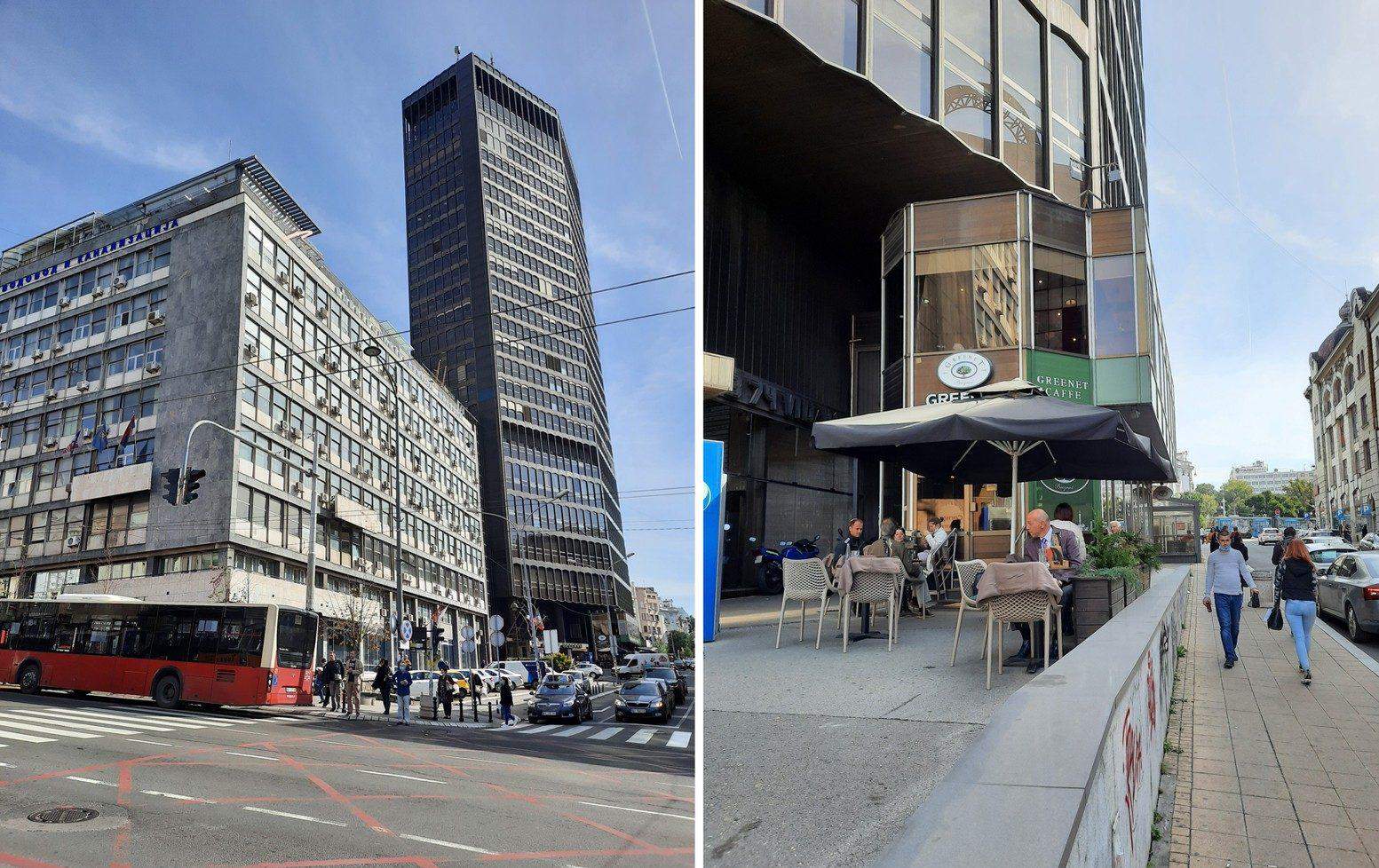
photography by: Omri Westmark
Across Belgrade, there are numerous examples of dull residential complex, perceived by many as an eye-sore. In attempt to beautify the city and rebrand some of its Yugoslav-era projects, local authorities face lifted the public space around the buildings with charming strong colors, overshadowing its nondescript character.

photography by: Omri Westmark
There is probably no better testimony to the transformation that took place than street art popping out, as it usually defies the sterile nature of suburban environment.
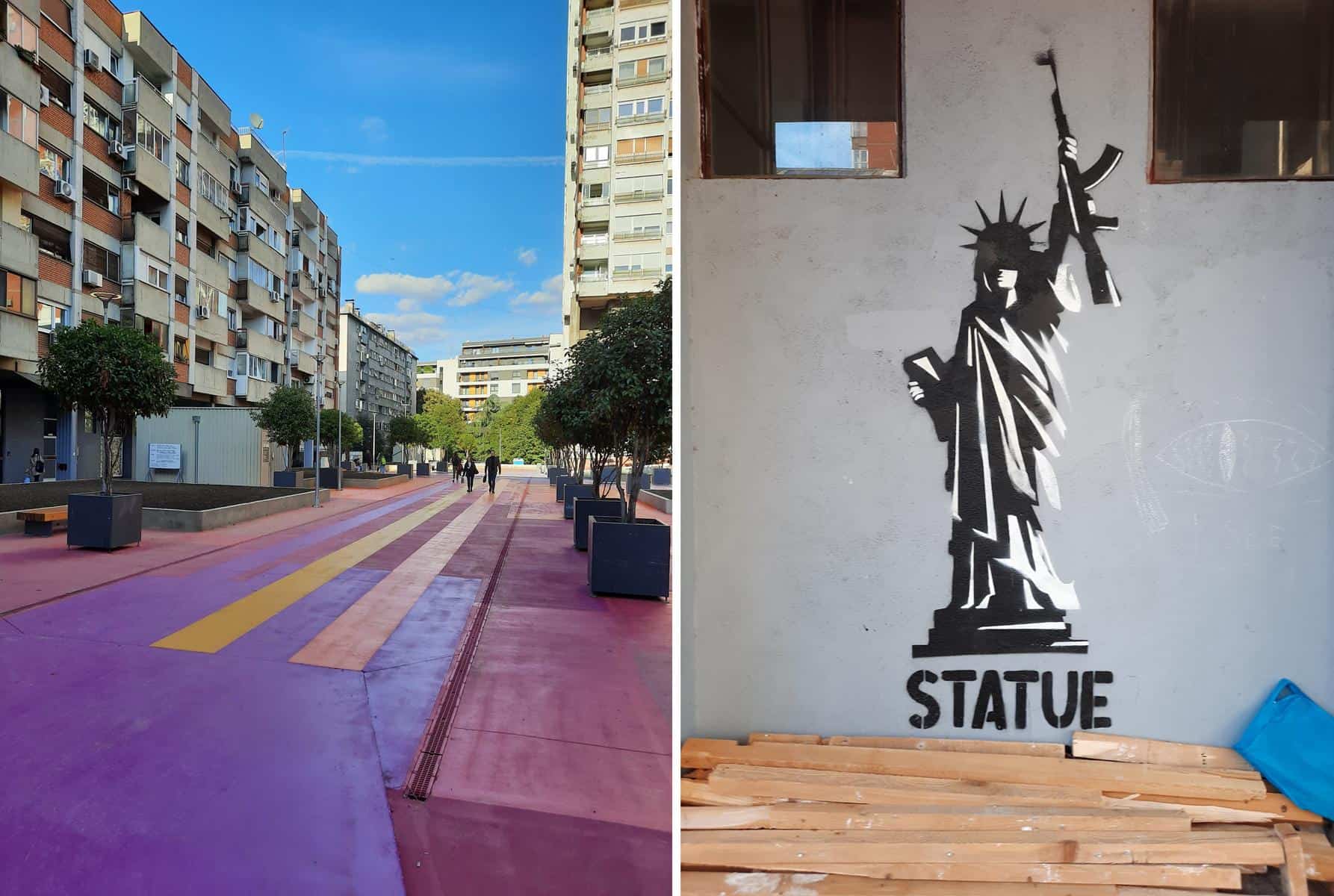
photography by: Omri Westmark
Bestowed with plenty of charming parks, Belgrade has no lack of outstanding green space to balance its concrete jungle, yet no park is as renowned among locals as Ada Peninsula, locally known as Ada Ciganlija. Formerly an island in the Sava River, it was transformed into a peninsula by the construction of two dams, consequently also forming an artificial body of water, expectedly named Sava Lake. This elongated patch of land serves as a recreational center for the city dwellers, most notably during the peak of the summer when the significantly cooler Ada’s micro climate attracts tens of thousands of visitors on a daily basis.
By now you might rightly ask yourself how the vast throng at the park correlates with the article’s title, and while to some extent it’s one of the most popular parts of Belgrade, it’s not a touristy place in any way, offering an authentic glimpse of the city’s leisure culture. Nevertheless, Ada Ciganlija can still be experienced without the large human masses at winters or autumns, when the cold weather and the subsequent minor stream of people makes it much more peaceful and calmer.
One of the most enjoyable activities Ada peninsula has to offer is bicycle riding across its extensive network of lanes, as cheap and reliable bike rentals are available throughout the park.
Probably the most impressive and interesting way to get into the park is by walking along the newly constructed Ada Bridge, spanning over 300 meters above the Sava River, offering stunning views of Belgrade’s skyline and Ada peninsula. The bridge’s main and only pylon punctuates the tip of Ada Ciganlija, granting pedestrians an access by a concrete staircase and an elevator, which for the time being is sadly out of order.

photography by: Omri Westmark
One of the most prominent sight visible while crossing the bridge are the raft houses on the banks of Sava River (the left one is Ada peninsula), some of which are rentable at major accommodation websites.
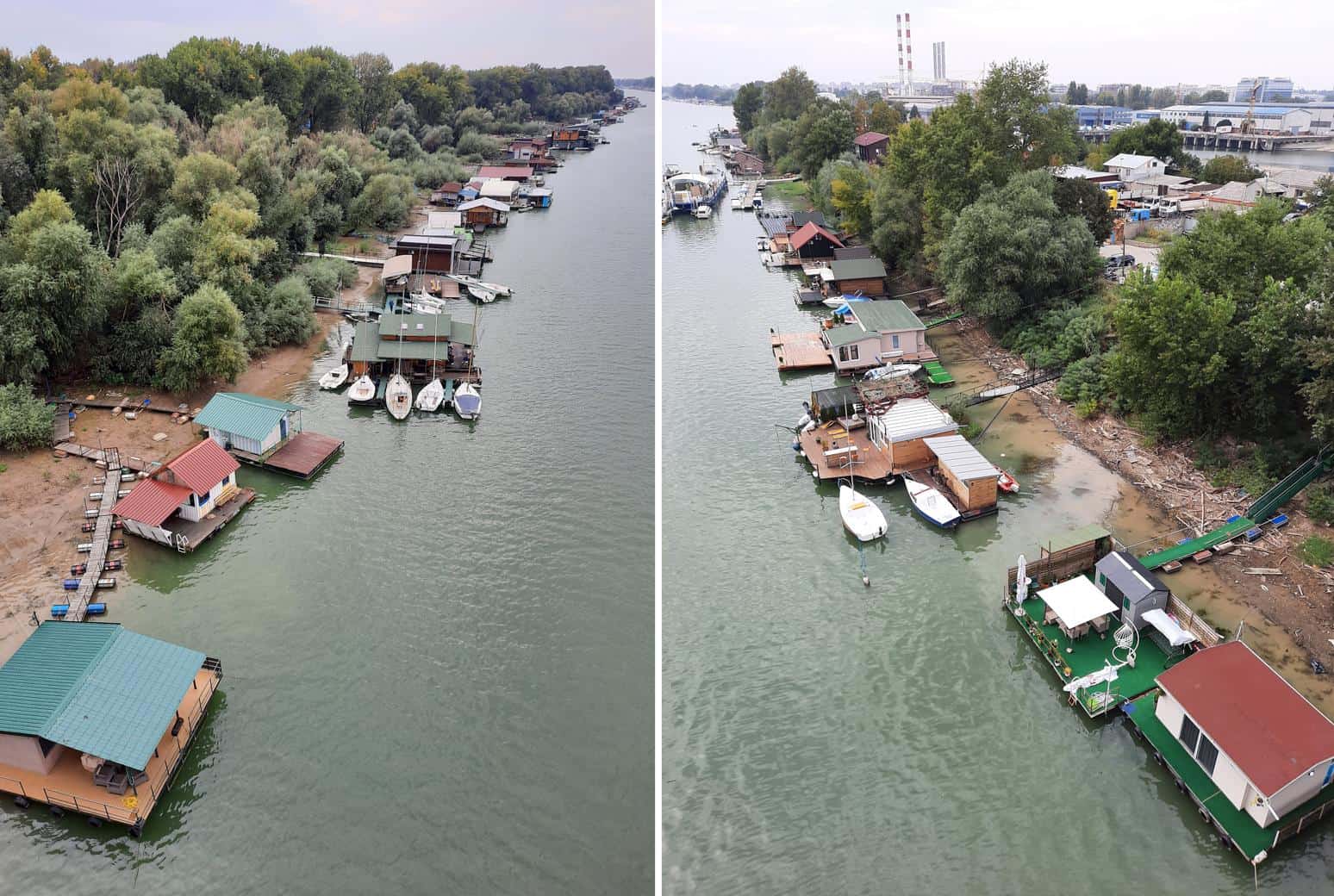
photography by: Omri Westmark
Ada peninsula is home to countless sport facilities, particularly of aquatic sports, hosting a couple of international contests throughout the years. Along its banks are dozens of rowing and kayaking clubs, cultivating the next generation of oarsmen.
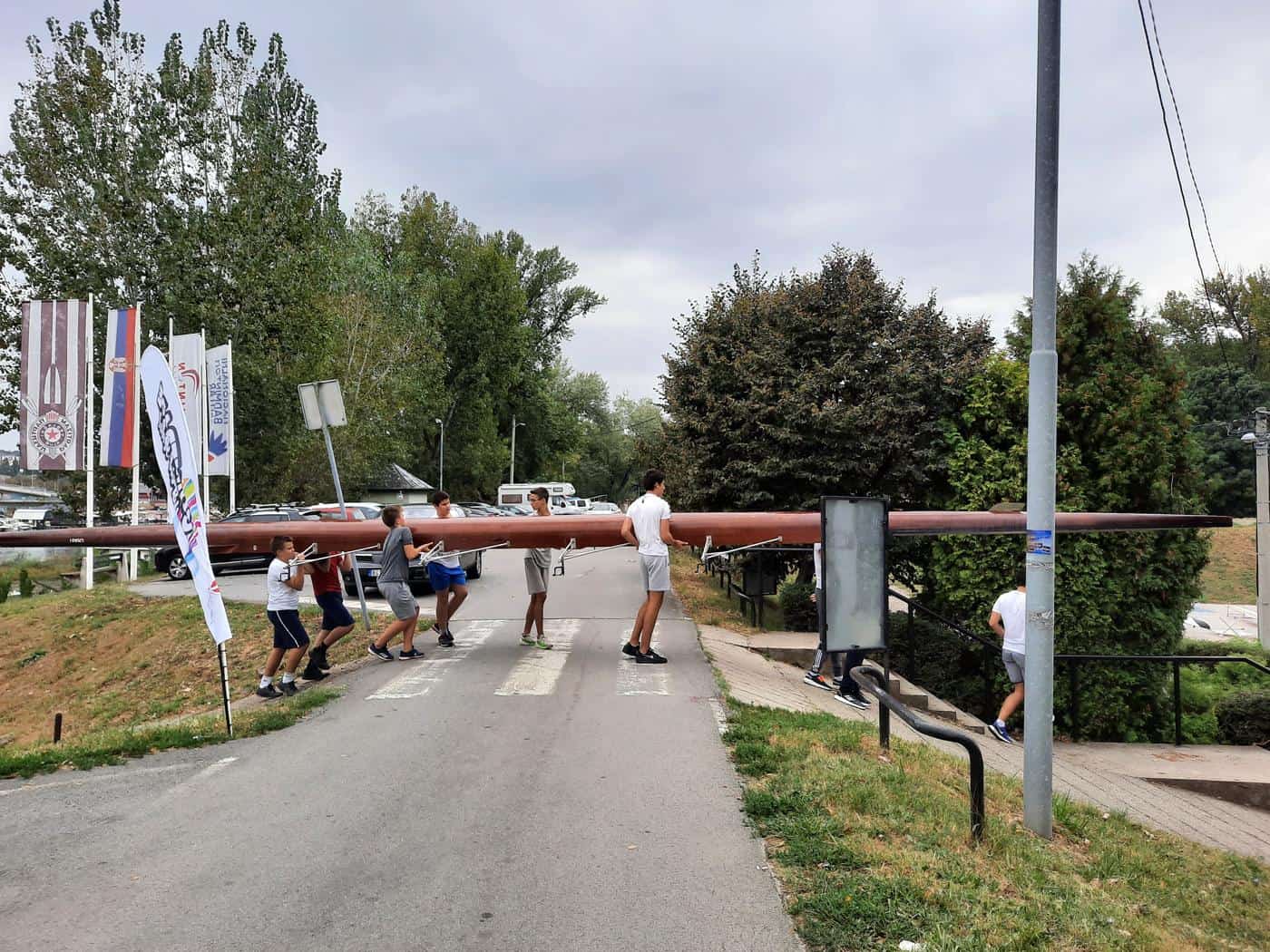
photography by: Omri Westmark
The piers where the rowers embark on their kayak sessions are busy all year round, teeming with energy loaded teenagers and guides.

photography by: Omri Westmark
The small inlet between Ada peninsula and Belgrade mainland, aka Čukarica Bay, has multiple docking facilities for yacht, while Ada Bridge popping out at the background.

photography by: Omri Westmark
Inspired by the original world-renowned site in the UK, Ada Stonehenge is a work of art consisting of several oddly shaped, located at the embankment linking the peninsula to the city.
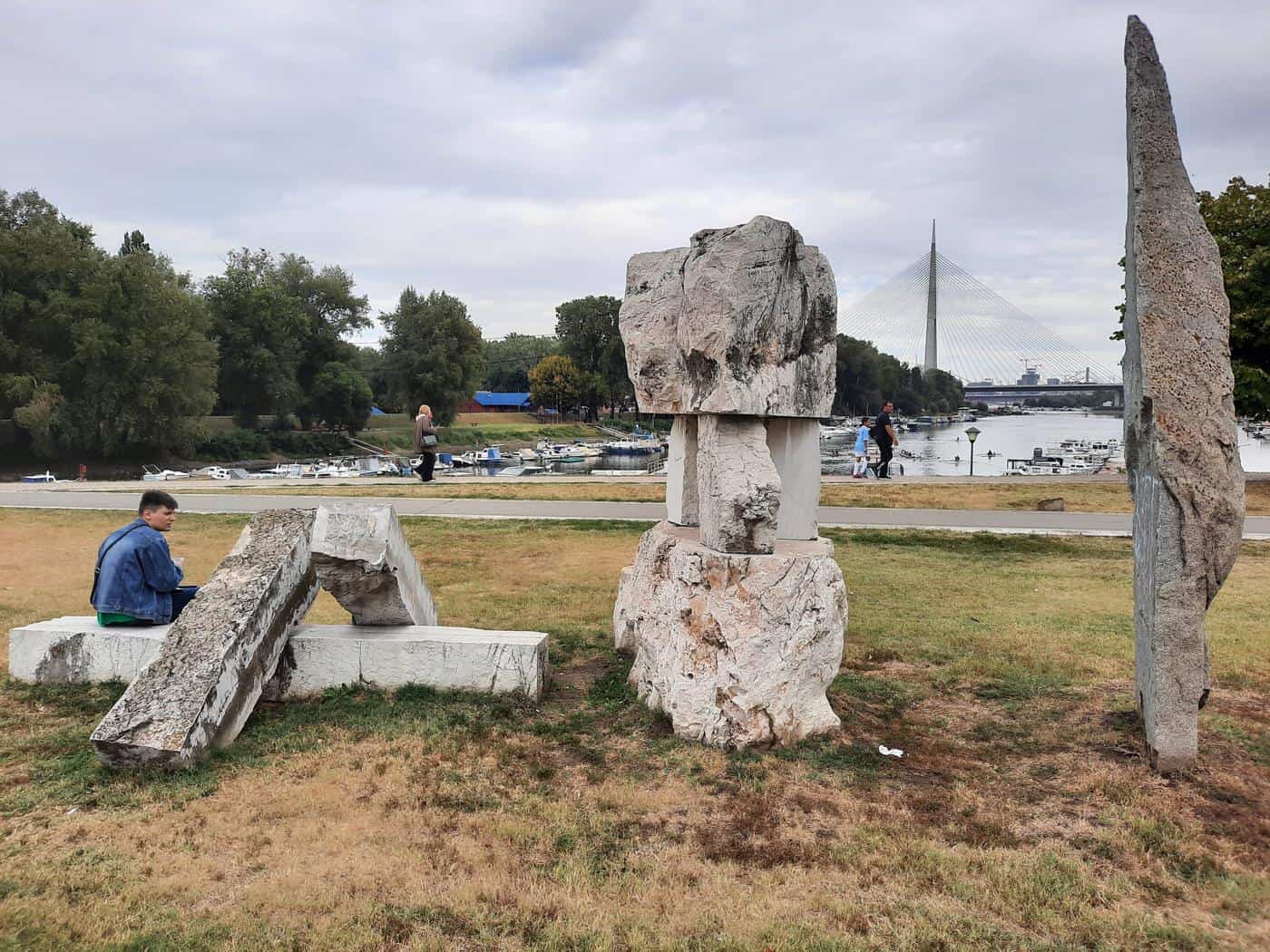
photography by: Omri Westmark
Interestingly, the artist behind Ada Stonehenge, Ratko Vulanović, confessed that besides the site’s more ancient and famous version, he was also inspired by the circularly arranged stones in the fireplace at his family house during his childhood.
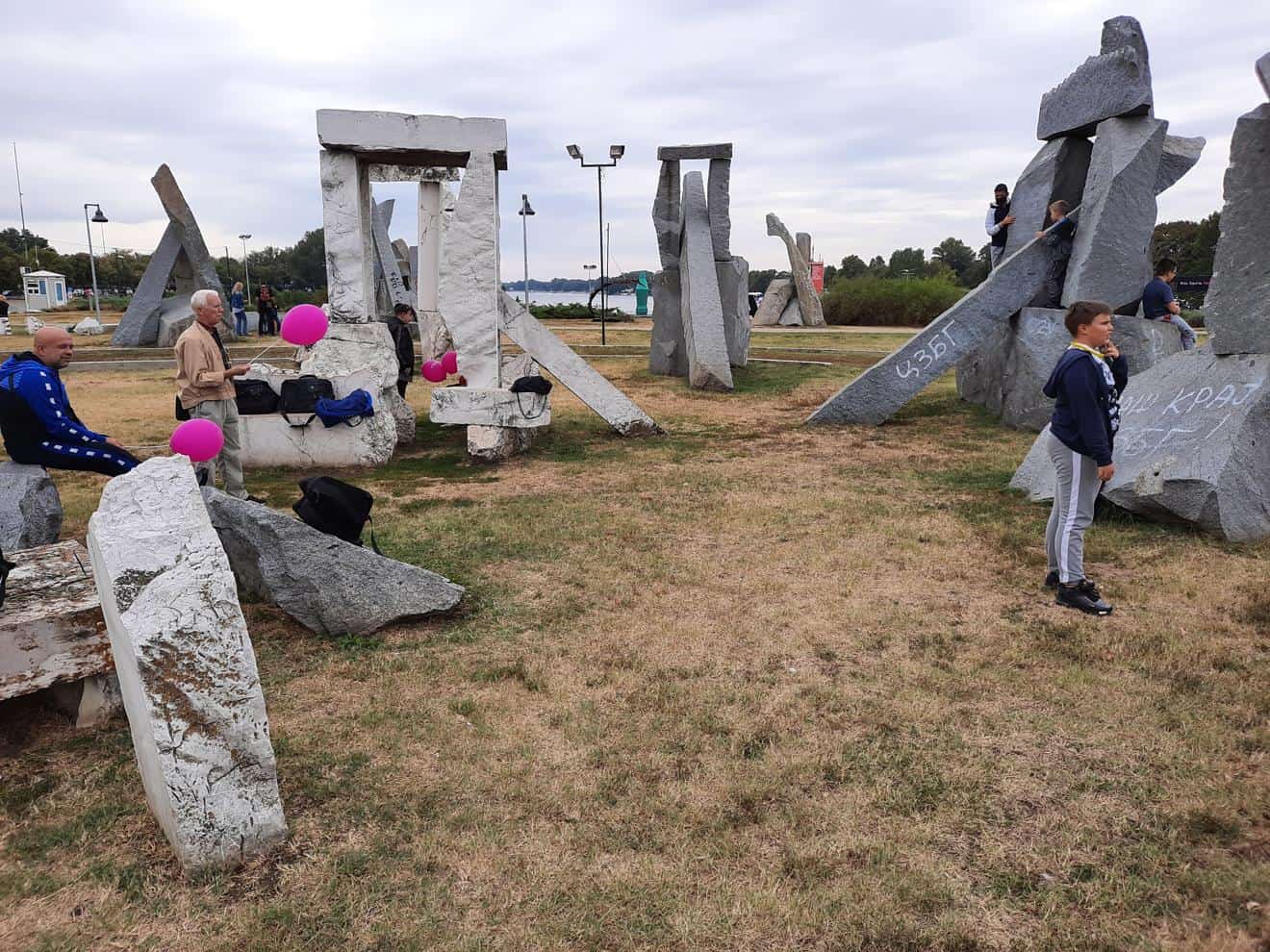
photography by: Omri Westmark
The raft houses along the Sava River are accessible via an elevated walkway, specifically designed to keep a pedestrian passage during the rainy season, when the water level rises, resulting in flooding of the pavements around the banks.

photography by: Omri Westmark
Being buoyant, the raft houses adjust their relative height according to the river’s level of water.
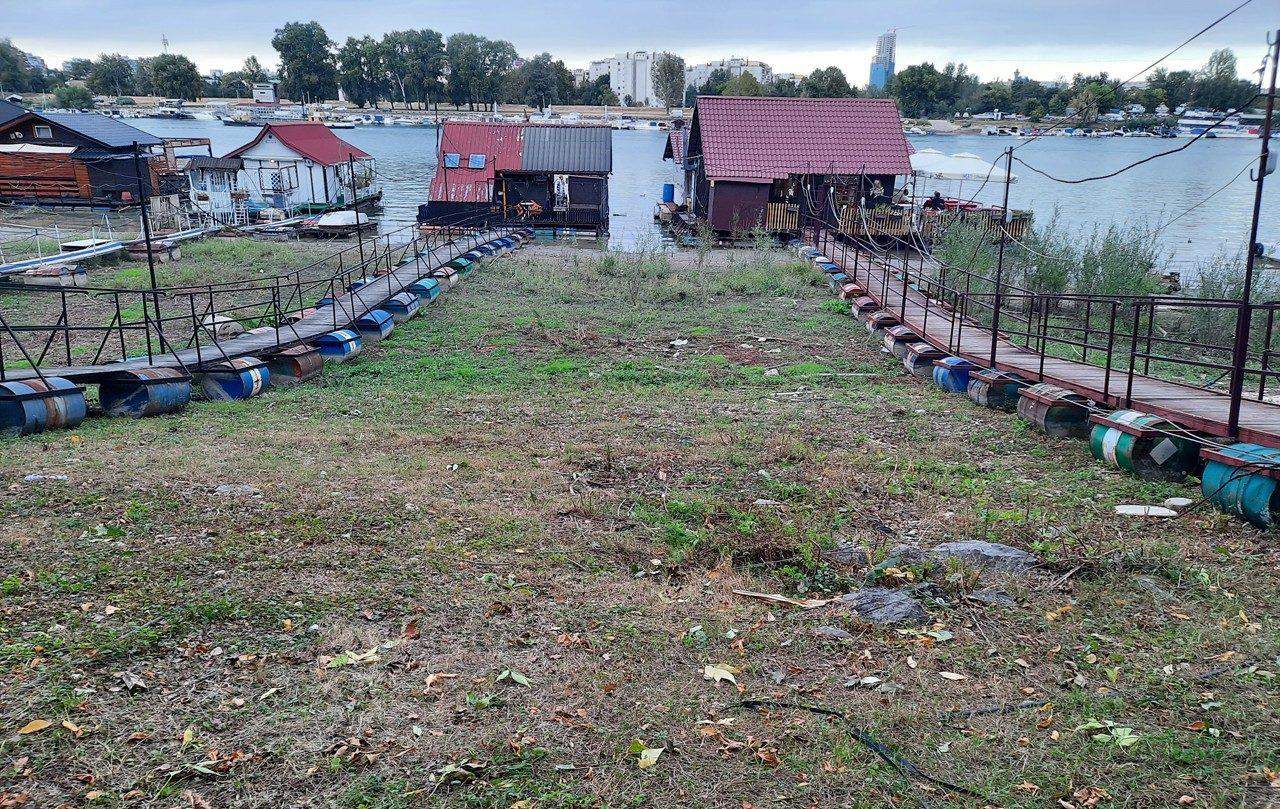
photography by: Omri Westmark
Sometimes referred to as the Sea of Belgrade, Sava Lake has almost 7 kilometers of beaches, which during warm weather becomes a magnet for thousands of swimmer and sunbathers. Additionally, its pebble littered lakefront is home to plenty of cafés, restaurants and bars, providing the perfect excuse to gaze at the lake while sipping a coffee or local beer.
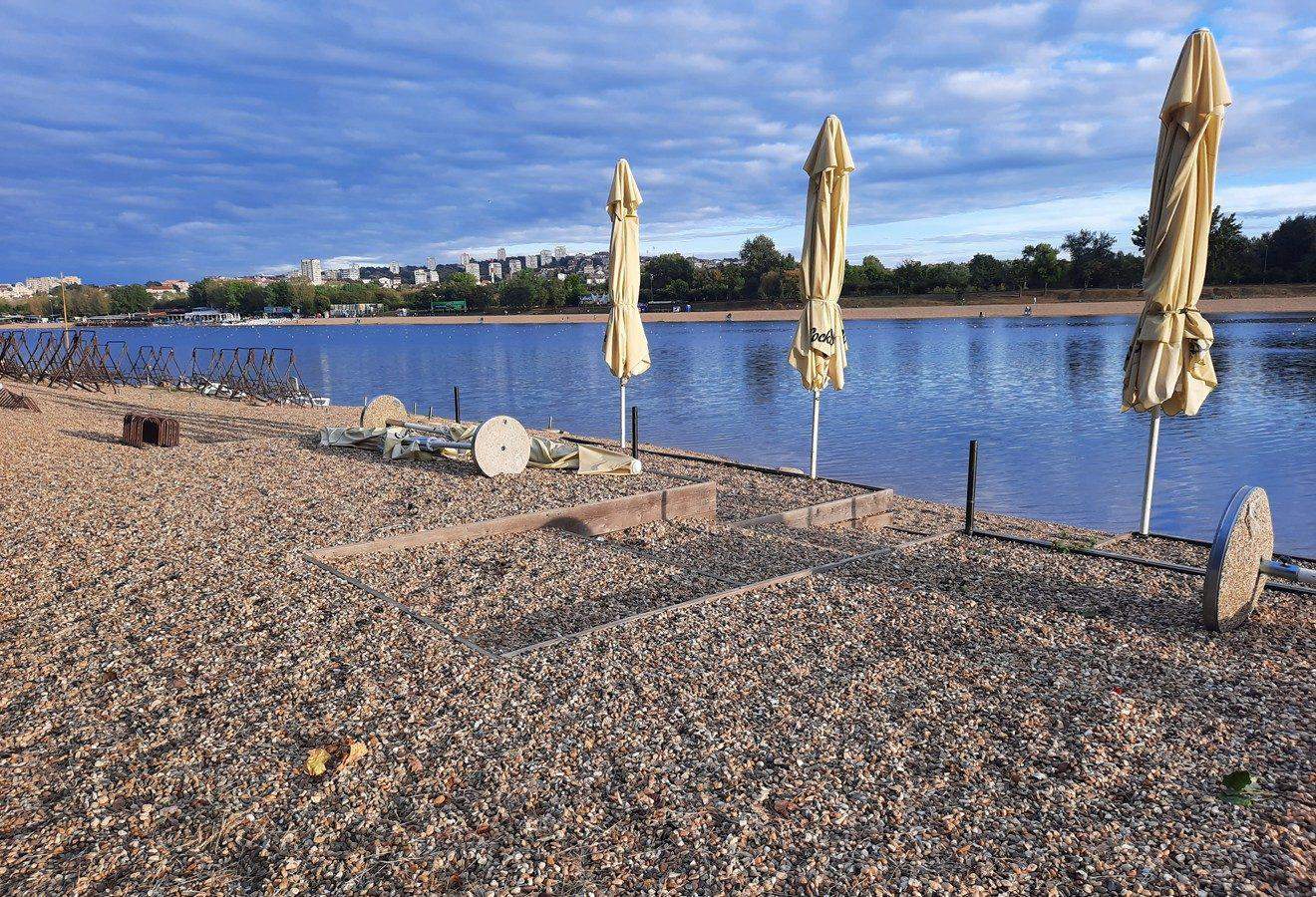
photography by: Omri Westmark
The view from the second dam, separating Sava lake from the smaller Taložnik lake, which is also separated from the river itself by a third dam.

photography by: Omri Westmark
One of the best ways to enjoy Ada Ciganlija is by sitting on its shore, gazing at the incredible sunset at the park.

photography by: Omri Westmark
Often deemed as the oxygen factory of Belgrade, Zvezdara Forest is an artificially planted woodland, surrounded completely by the city’s urban sprawl. Interestingly, the forest, as the entire area, is named after the astronomical observatory, constructed in 1932, literally translated as star house (Zvezdara).
Traversed by several paths, the forest is a great place to hike and seek refuge from the hustle and bustle of Belgrade, while a visit to Zvezdara also provides a great opportunity to explore the intriguing astronomical complex and its numerous architectural gems.
The forest is nestled on the 253-meter high Zvezdara hill, overlooking downtown Belgrade.
Take note that if you decide to get there by foot, it entails slightly intense climbing. The forest has a couple of dirt paths crossing it in every direction, all of which are ultimately short distance away from asphalt roads, so no need to be anxious in case you find yourself lost in the woodland.
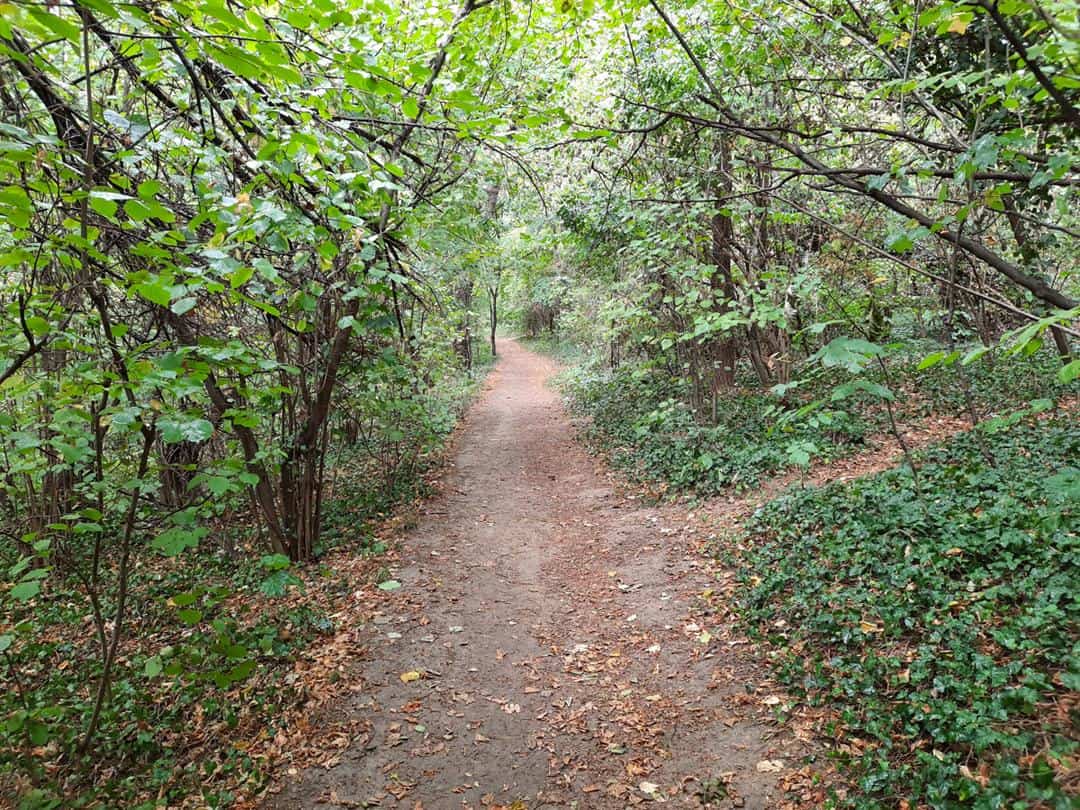
photography by: Omri Westmark
Prior to its mass forestation, the hill was covered by vineyards, meadows and orchards, as for centuries it was frequently flocked by Belgraders who looked for getaway and pleasant spot for picnics.
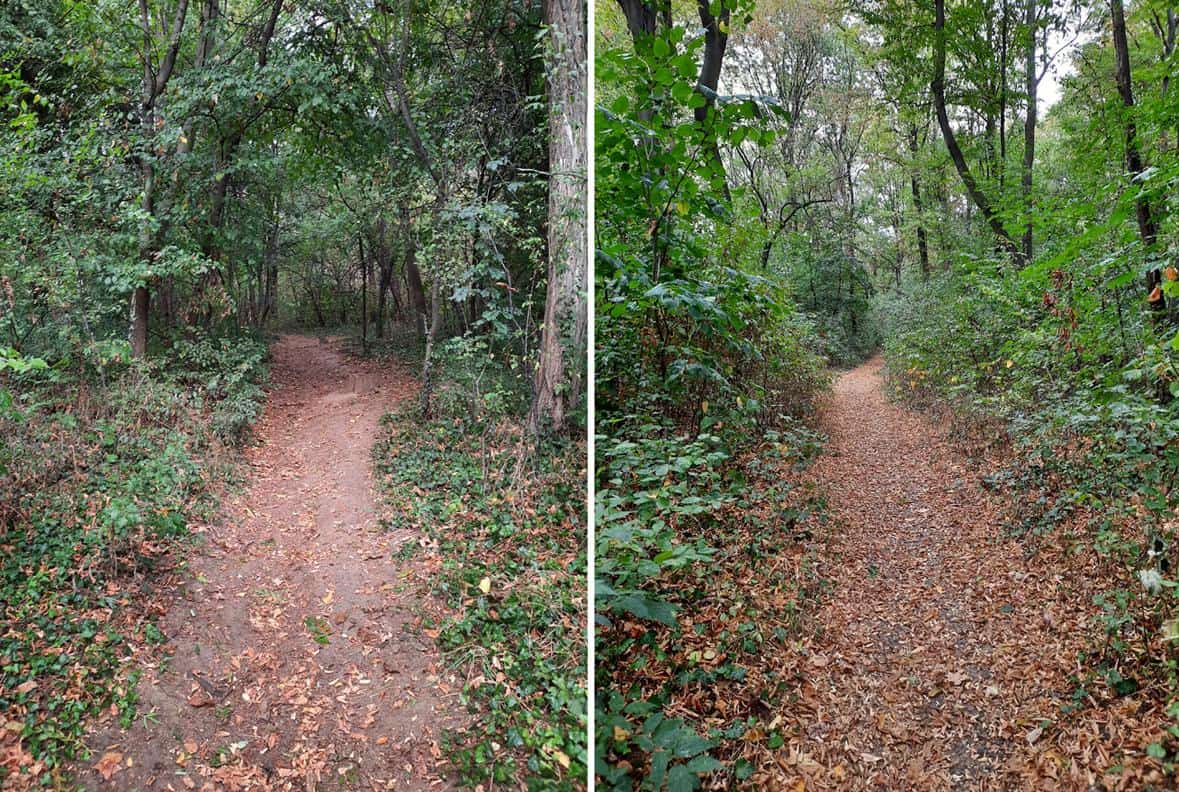
photography by: Omri Westmark
Surrounded completely by Zvezdara forest, Belgrade Astronomical Observatory was built in 1932. Designed by the Czech architect Jan Dubovy, the observatory main office is deemed as one of the first modernist buildings in the city, vastly praised as an architectural master-piece.
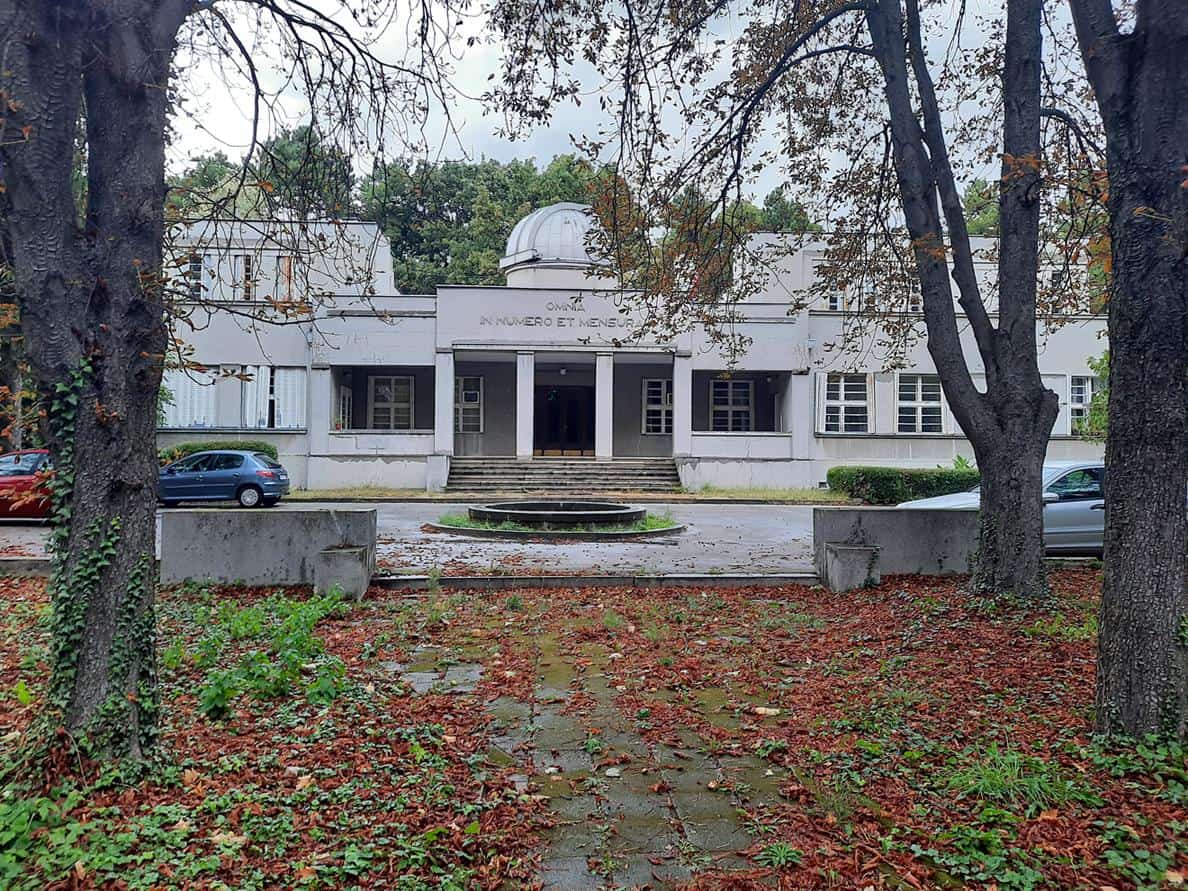
photography by: Omri Westmark
Located in front of the main administrative building, the pavilion of the small refractor features a circular and elegantly clean façade. Due to the ever-expanding urban sprawl around the observatory, the subsequent light pollution made the scientific research impractical, gradually turning the facility into a museum, while a brand-new observatory was built at Mount Vidojevica, in the country’s southern part.
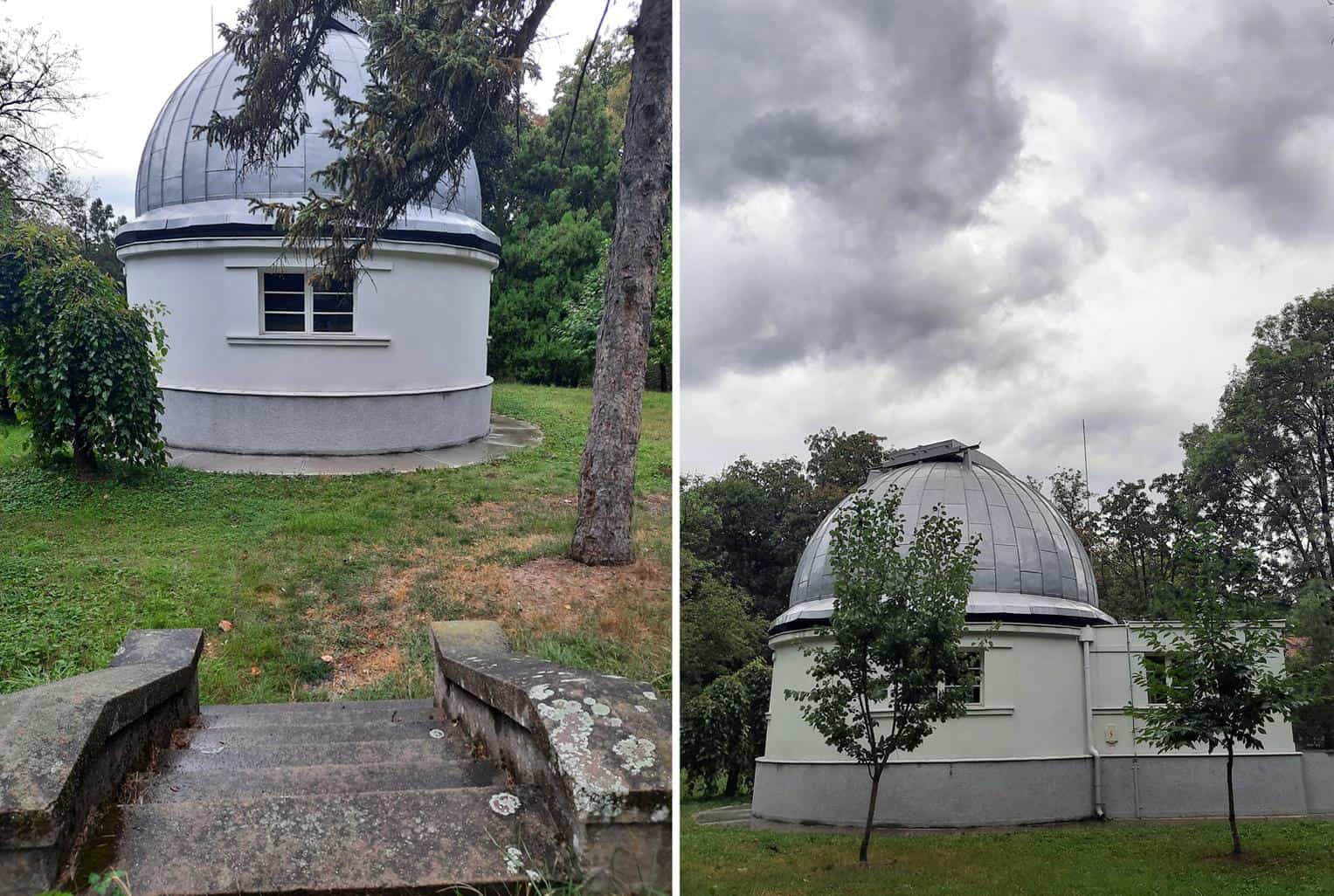
photography by: Omri Westmark
The observatory complex is home to several pavilions, one of which is the pavilion of Astrograph Zeiss, when during its operational years was where scientists discovered dozens of asteroids and comets.

photography by: Omri Westmark
The pavilion of the large refractor.
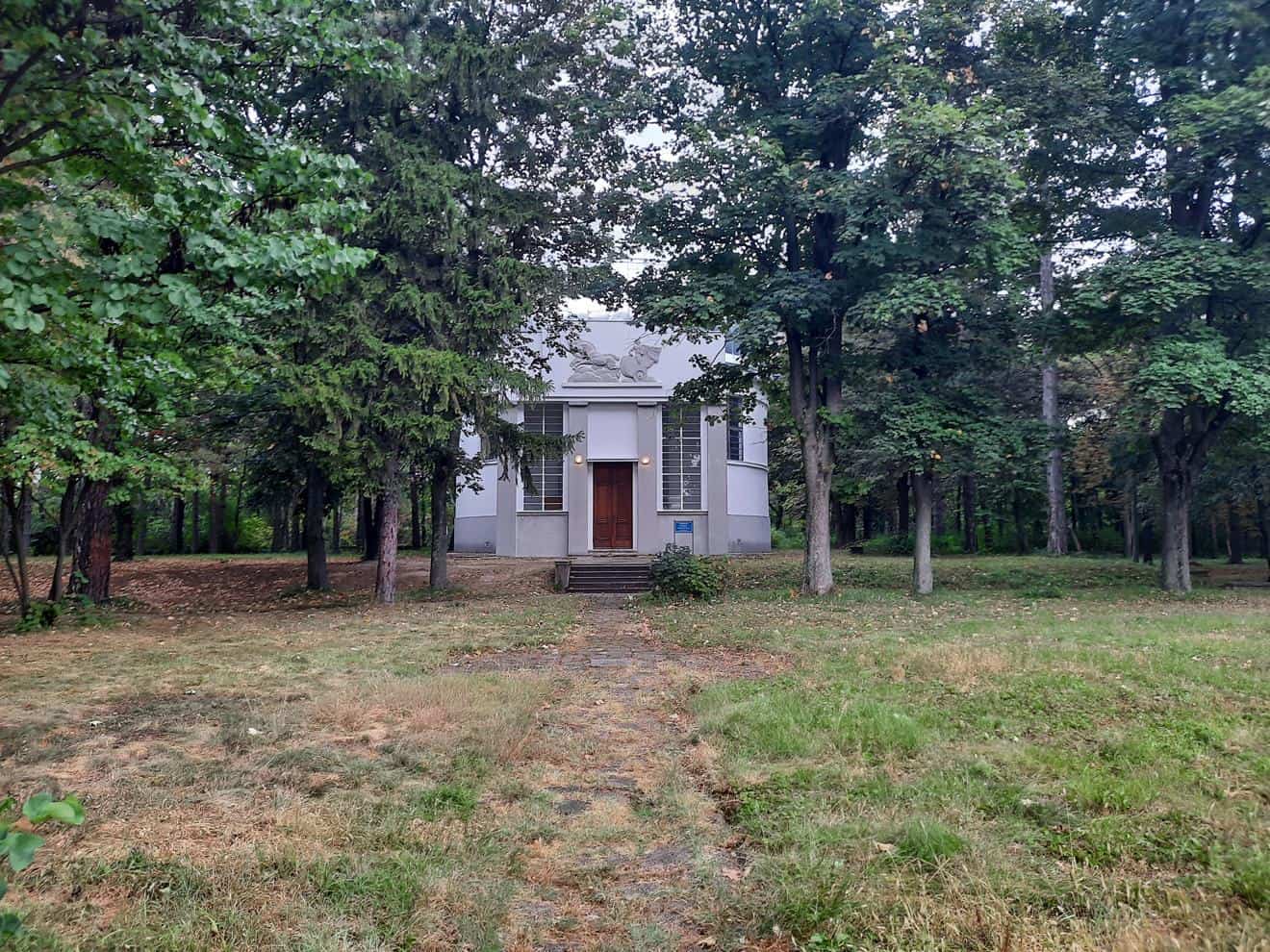
photography by: Omri Westmark
Densely forested like the rest of Zvezdara, the observatory 11 acres premises have plenty of interesting crannies to explore beside its historical renowned buildings, for instance, I came across at this charming little wooden house, somewhat providing a glimpse of rural Serbia.
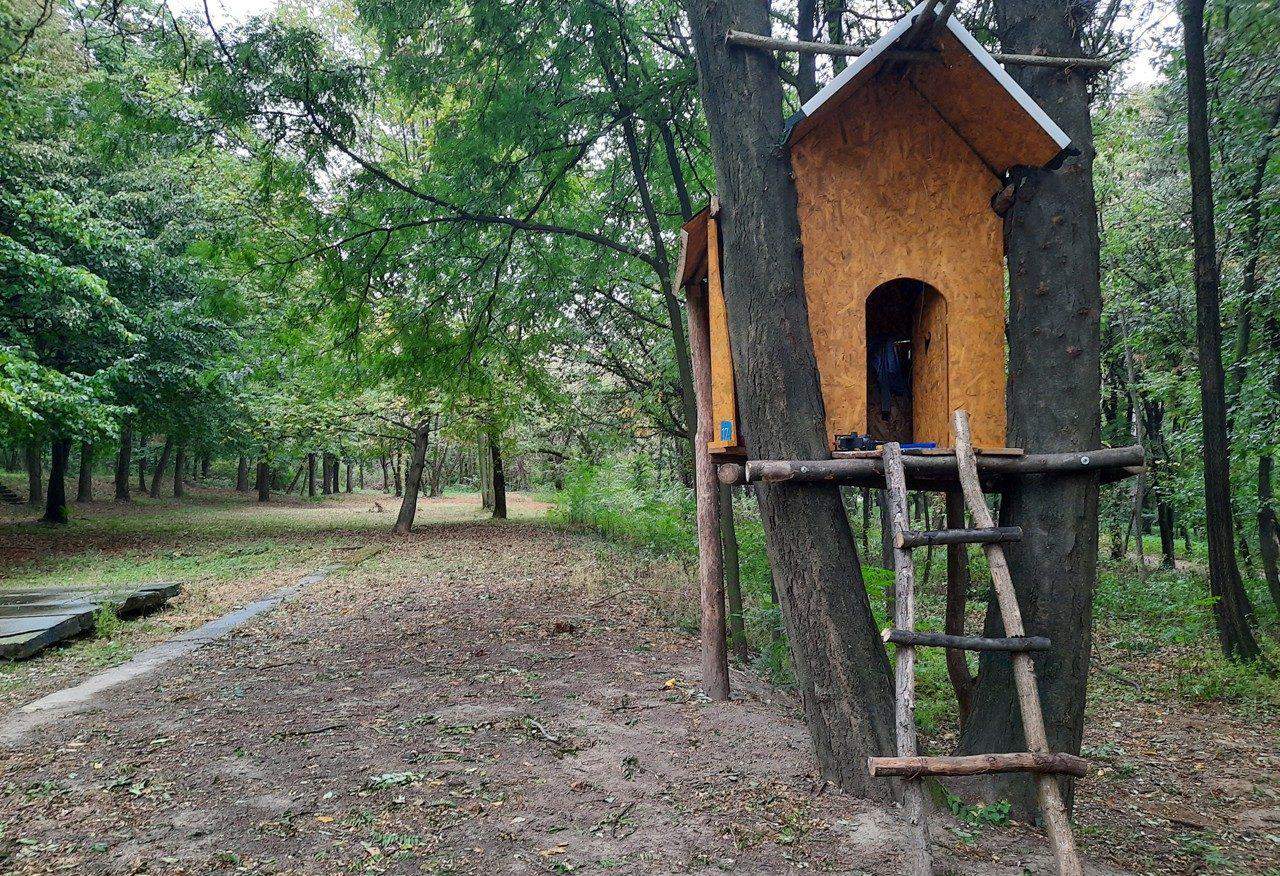
photography by: Omri Westmark
Facing the observatory’s entrance is a small lookout tower, adorned with a spiral staircase.
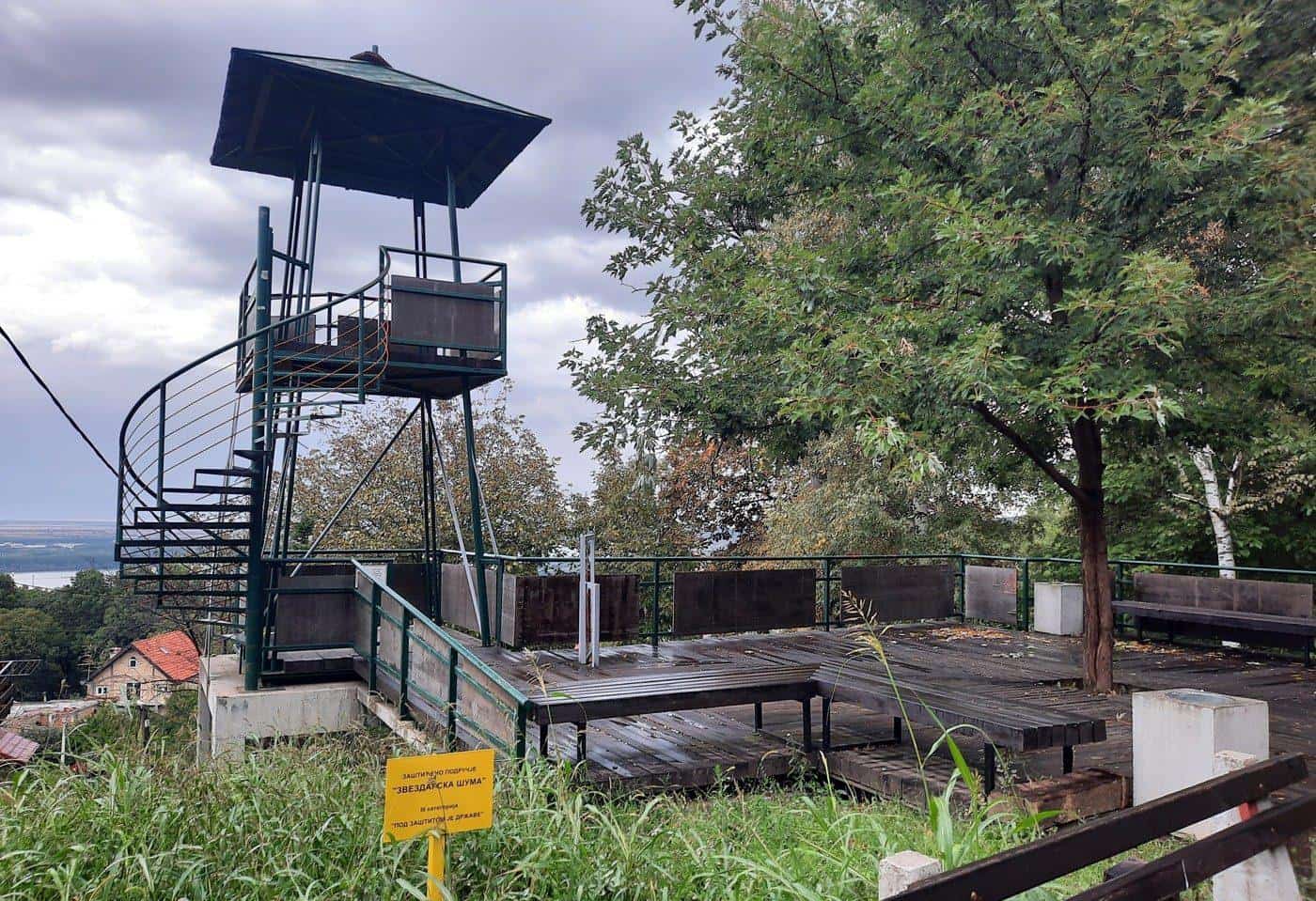
photography by: Omri Westmark
The lookout is blessed with a stunning view of Belgrade’s suburban neighborhoods on the backdrop of the mighty Danube River.

photography by: Omri Westmark
Nestled along the Danube, directly downward from Zvezdara Hill, Ada Huja is a hodgepodge of industrial complexes, recreational facilities and a charming strip of riverfront promenade. As the name suggest, Ada Huja, literally meaning “the island of rustle”, was formerly surround by water on all sides, gradually transformed into a peninsula following the accumulation of dirt and garbage in the Danube’s arm between the island and mainland Belgrade.
Once an unauthorized landfill of construction waste, the eastern tip of Ada Huja was transformed in 2012 into the Supernatural Park, an environmental project with educational activities, featuring circular greenhouse, birdwatching tower and a bar, all immersed in an artificially-made biodiverse reserve, home to dozens of animal and plant species.
Probably Ada Huja’s most iconic part is its esplanade along the Danube River, divided into upper and lower decks, interconnected by a series of staircases.
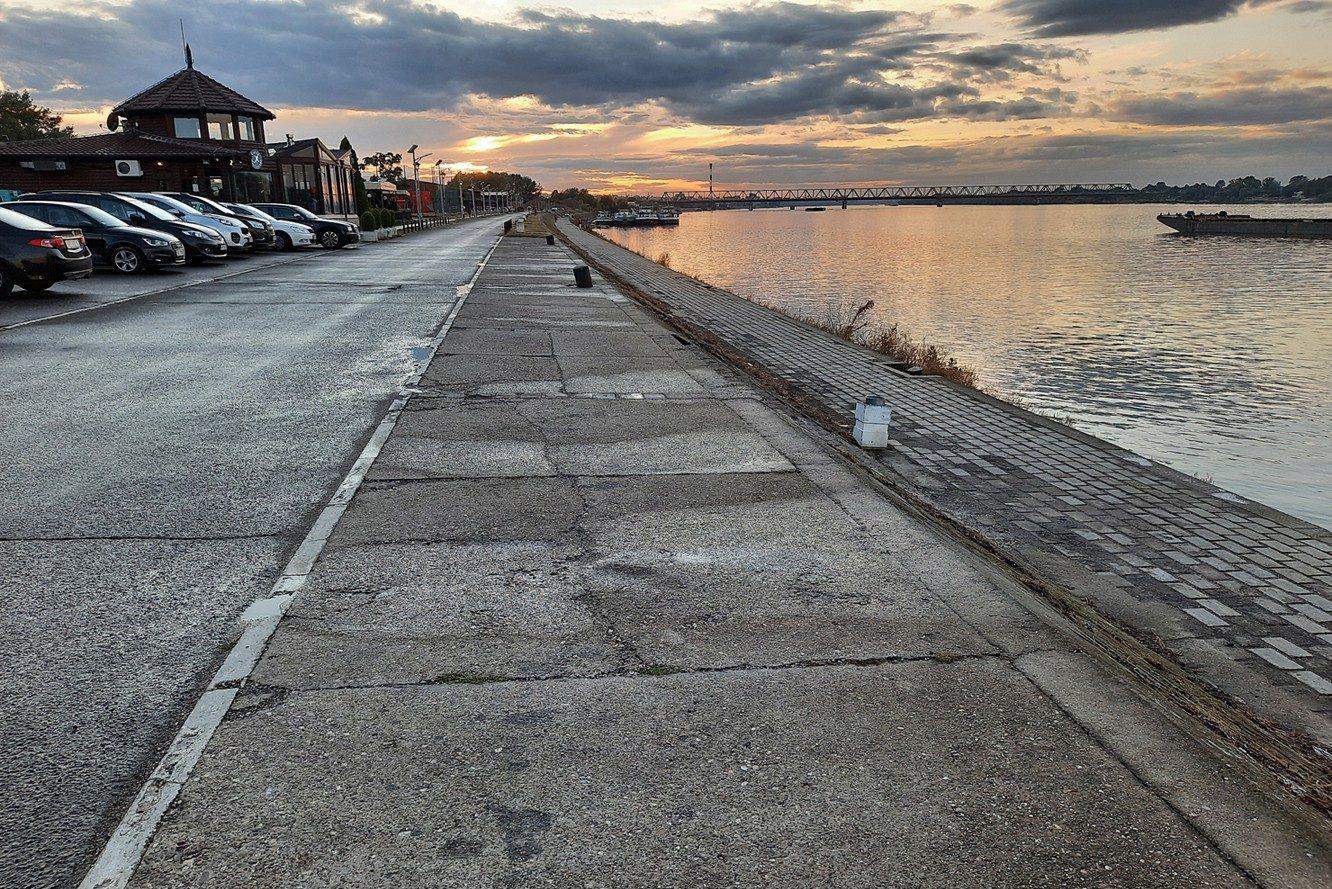
photography by: Omri Westmark
The esplanade’s lower part also functions as a berth for the countless vessels sailing across the river.

photography by: Omri Westmark
During calm weather, one of Ada Huja’s highlights is strolling along its riverfront promenade, while gazing at the stunning sunsets, decorating the sky with dramatic reddish hues.

photography by: Omri Westmark
The several raft platforms along the esplanade are occasionally repurposed as a selfie stand, though others might prefer dabbling their toes in the Danuban waters.
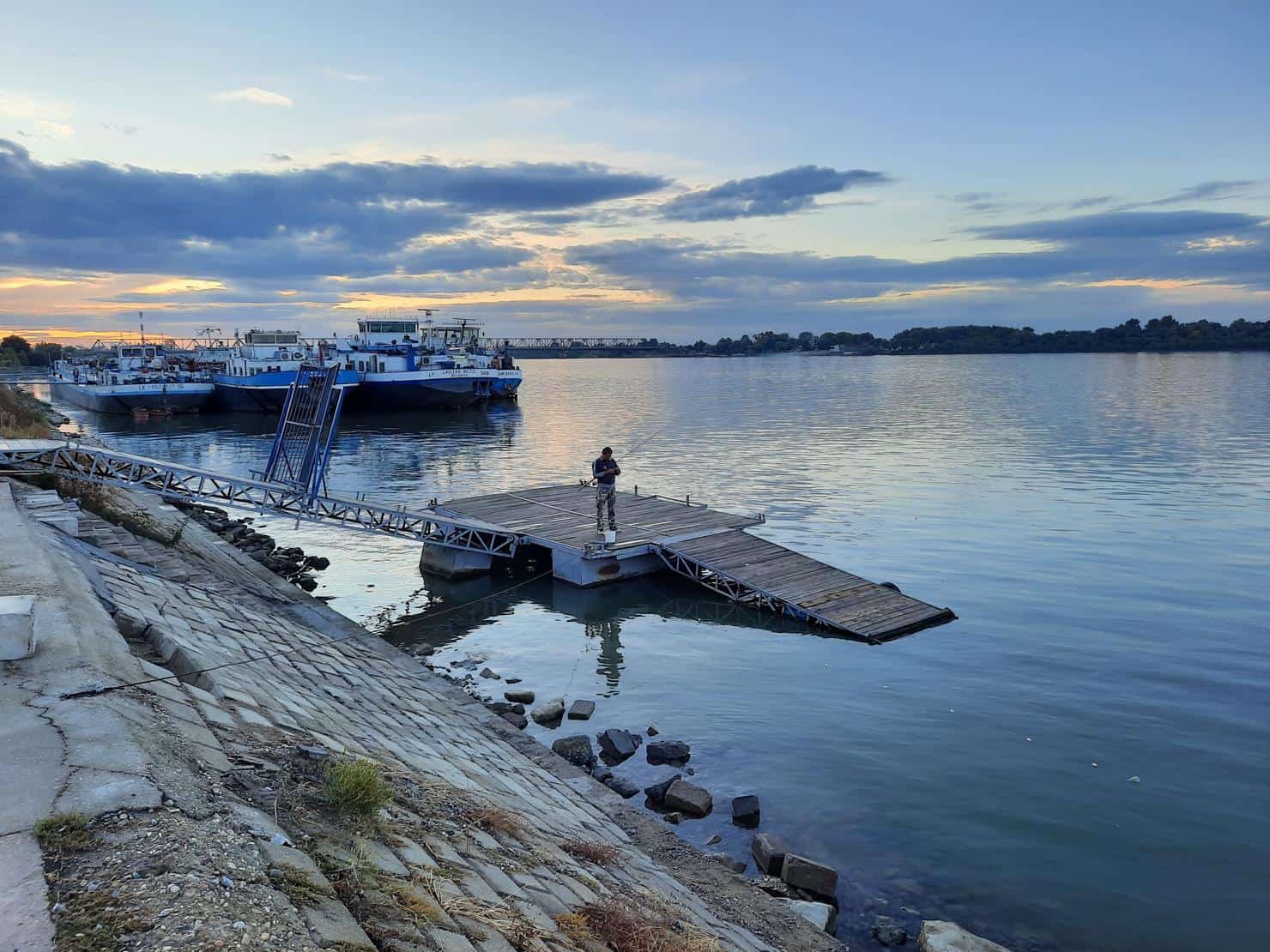
photography by: Omri Westmark
Ada Huja’s promenade is also home to several decent cafés and restaurants, offering an array of local and international scrumptious food, remarkably good value for money.
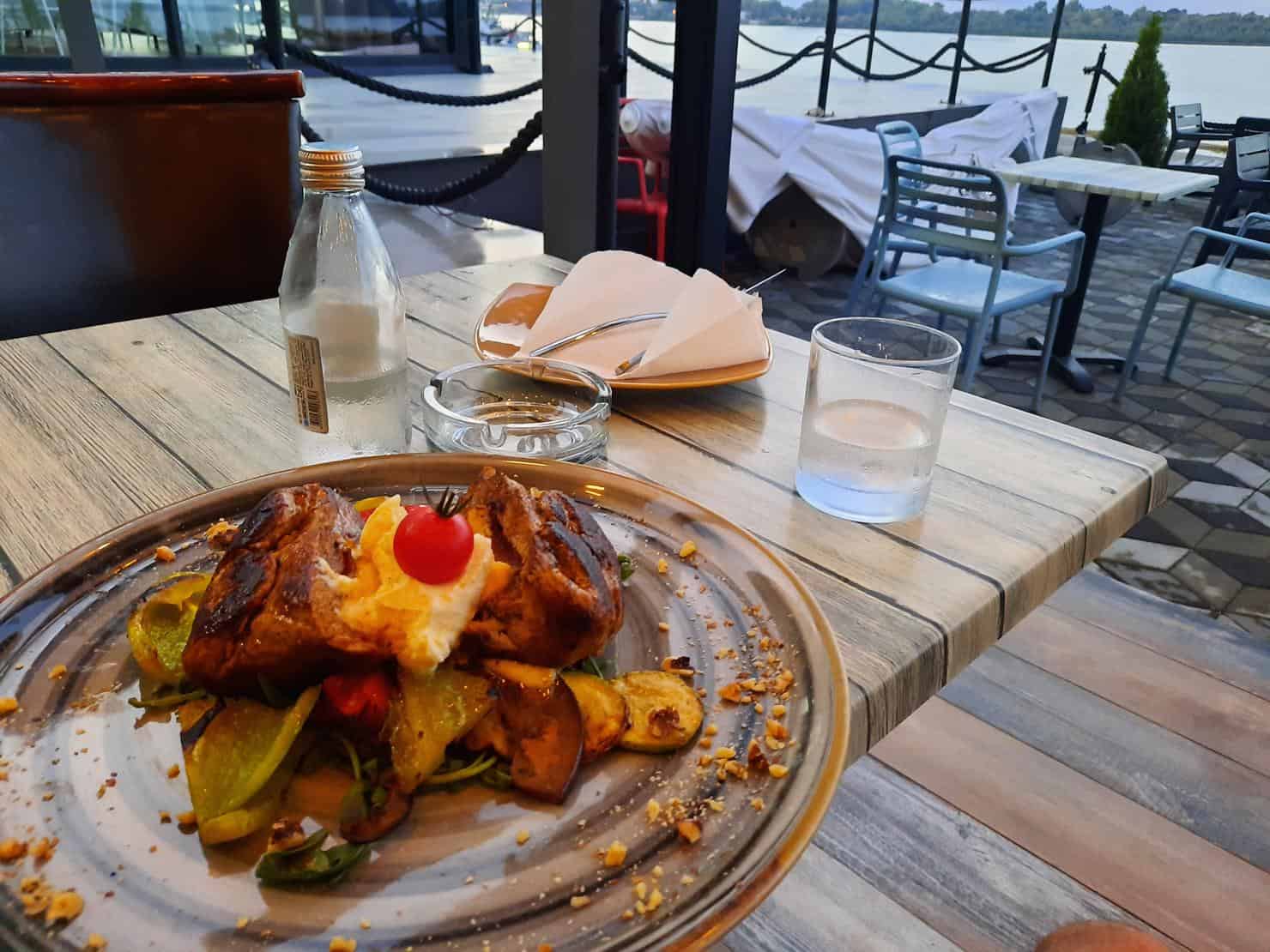
photography by: Omri Westmark
Mundane and gritty, Novi Beograd represents a completely different side of Belgrade, often overlooked by tourists who visit the city, regarding this part of town as dull, and while it’s not farfetched, this concrete jungle is by no means skippable.
Formerly covered by swamps and grasslands, the west bank of the Sava River was a sparsely populated area during the 1940’s, when following WW2 and the ensuing urgent necessity to house the thousands of displaced people, was transformed into the largest construction project in the history of the country. Firstly, a gigantic amount of sand from the nearby Danube and Sava Rivers was used to dry and drain the marshland, making room for a brand new city, constructed over the course of two decades, involving formidable toil by over 200,000 workers from all over Yugoslavia, including volunteers.
Up to these days, New Belgrade is considered somewhat controversial by many, planned according to the Le-Corbusier principles while rejecting the format of traditional urbanism, this part of the city is usually depicted as drab and uninteresting, but as it’s often the case, the reality is much more complex, as this endless grey cluster of buildings is also home to an extensive network of green spaces, new development projects, outstanding Splavs (floating clubs), all of which accompanied by a rare glance to the ordinary lives of Belgraders.
The bulk of Novi Beograd is comprised of large-scale residential complexes known as “Blok”, divided by wide avenues, with green strips separating between the street itself to the block.

photography by: Omri Westmark
Nowadays, a large percentage of what used to be the green gap along the buildings is reserved for parking, as many of the residents commute to other parts of the city for work or shopping on a daily basis.
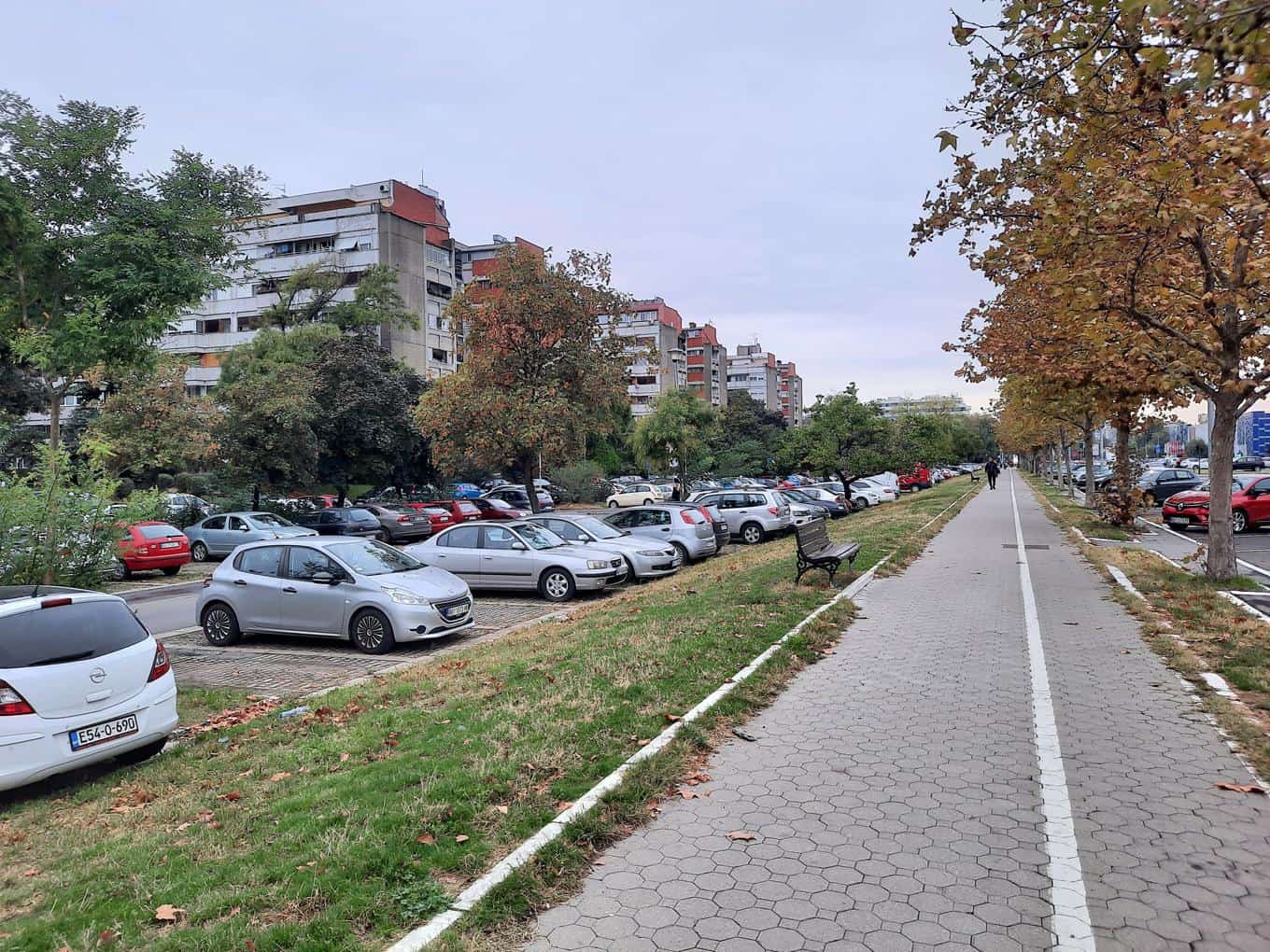
photography by: Omri Westmark
Across Novi Belgrade there are limited parts where commercial façades dominate the streetscape, either at newly constructed buildings or as a one storey extension jutting out from an old edifice, both of which create a far more vibrant street-scene than what is usually perceived for this part of the city.

photography by: Omri Westmark
Excluding very few exceptions, the vast majority of buildings are aligned according to the municipal quarter’s orthogonal grid, occasionally forming elongated and seamless facades, stretching up to 200 meters.
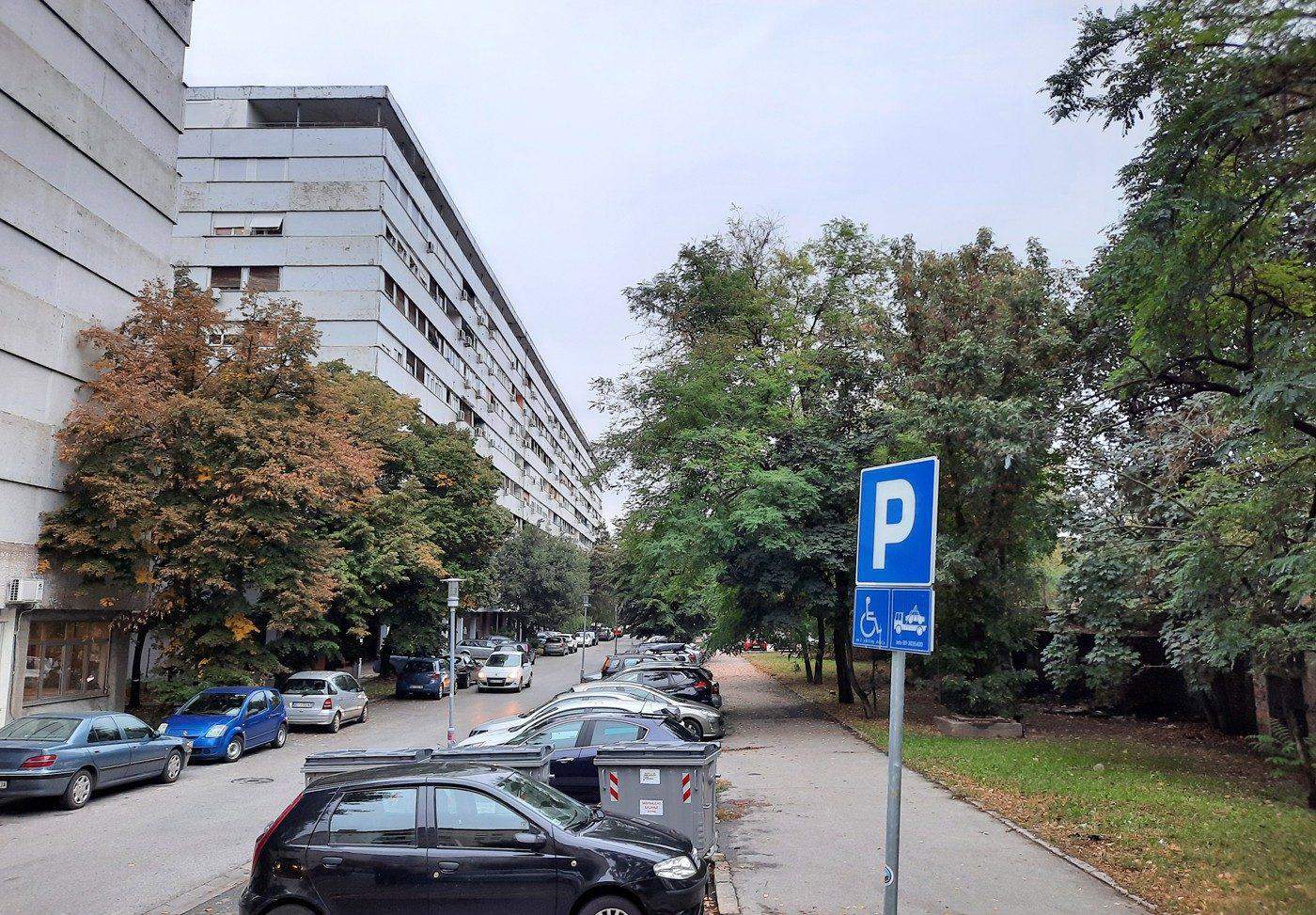
photography by: Omri Westmark
The inner part of every block is usually peppered with street furniture, playgrounds and green space, making it a favorite gathering place for children and families, seeking a respite from the large concrete housing they live in.
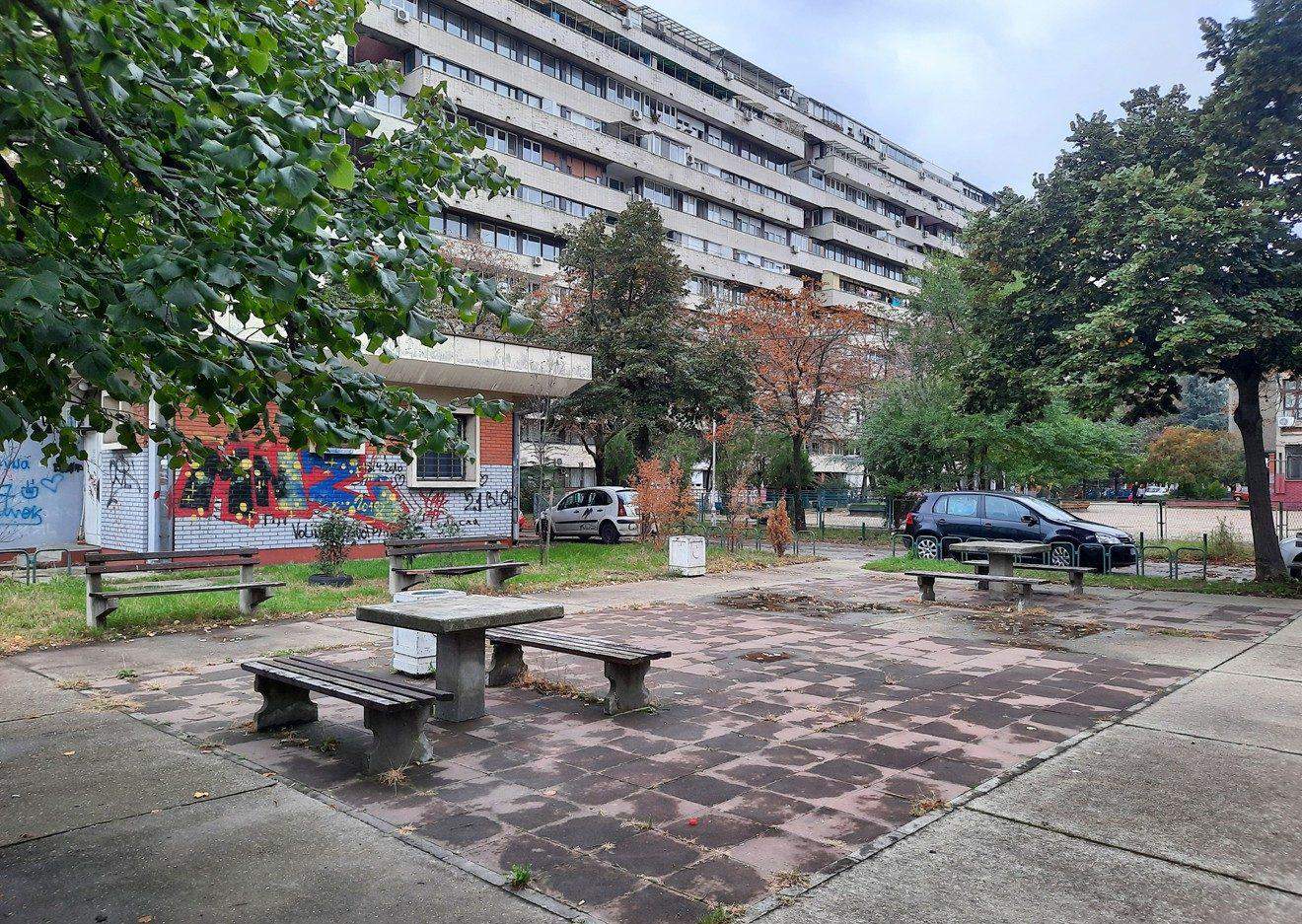
photography by: Omri Westmark
Despite being exceedingly mundane, New Belgrade is blessed with plenty of quaint sights, whether it’s a piece of art laying bare on a backyard or a local small-scale shop tucked away in a side-street’s colonnade.

photography by: Omri Westmark
Standing out among dozens of socialist style housing complexes, new residential buildings are popping out every year, strikingly contrasting the local cityscape both in terms of material and form.
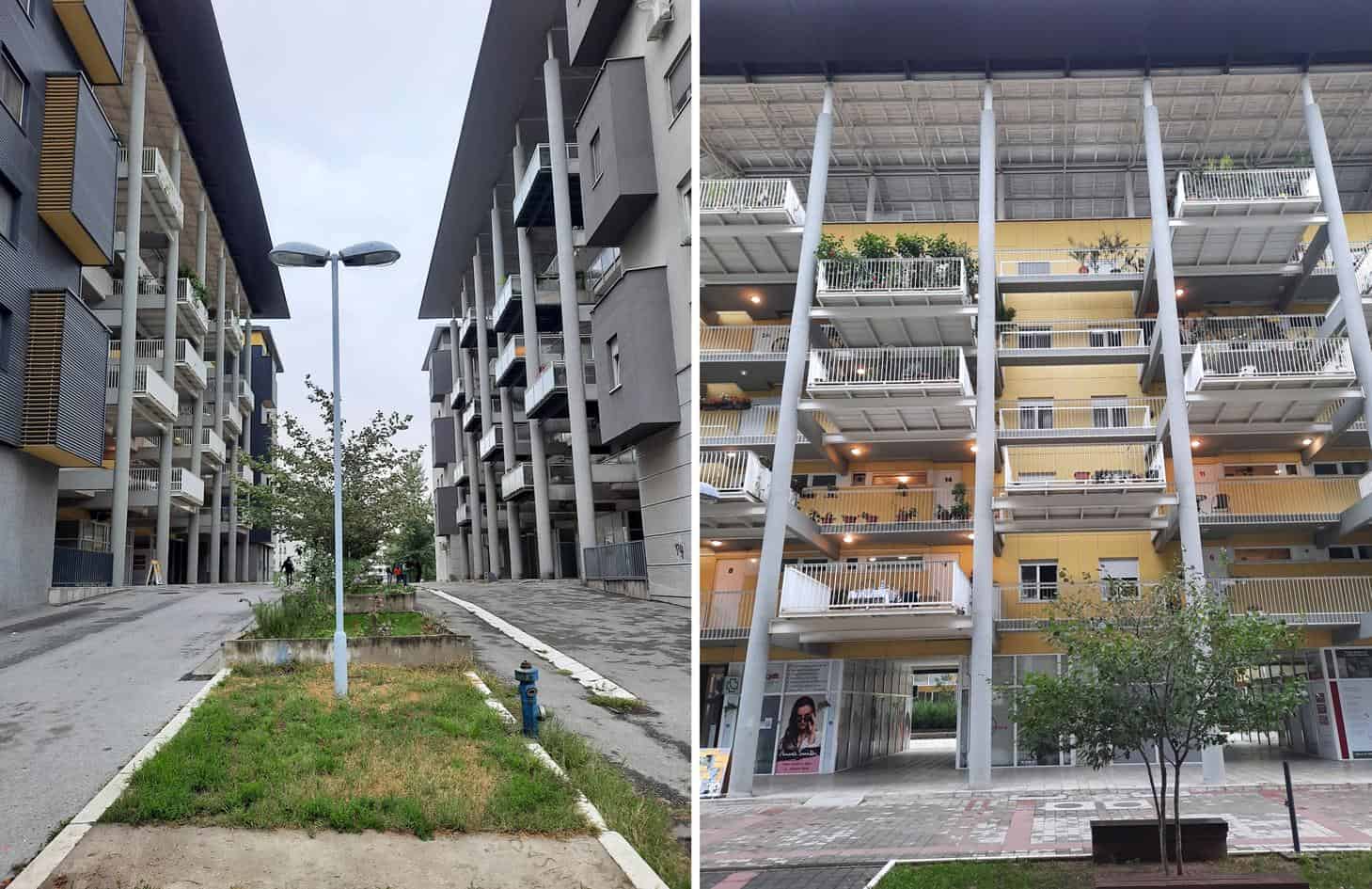
photography by: Omri Westmark
While the new projects are by far more modern than their 1960’s peers, the public space around them tends to be less pleasant and enjoyable, particularly the backyard which mostly stay empty all day long.
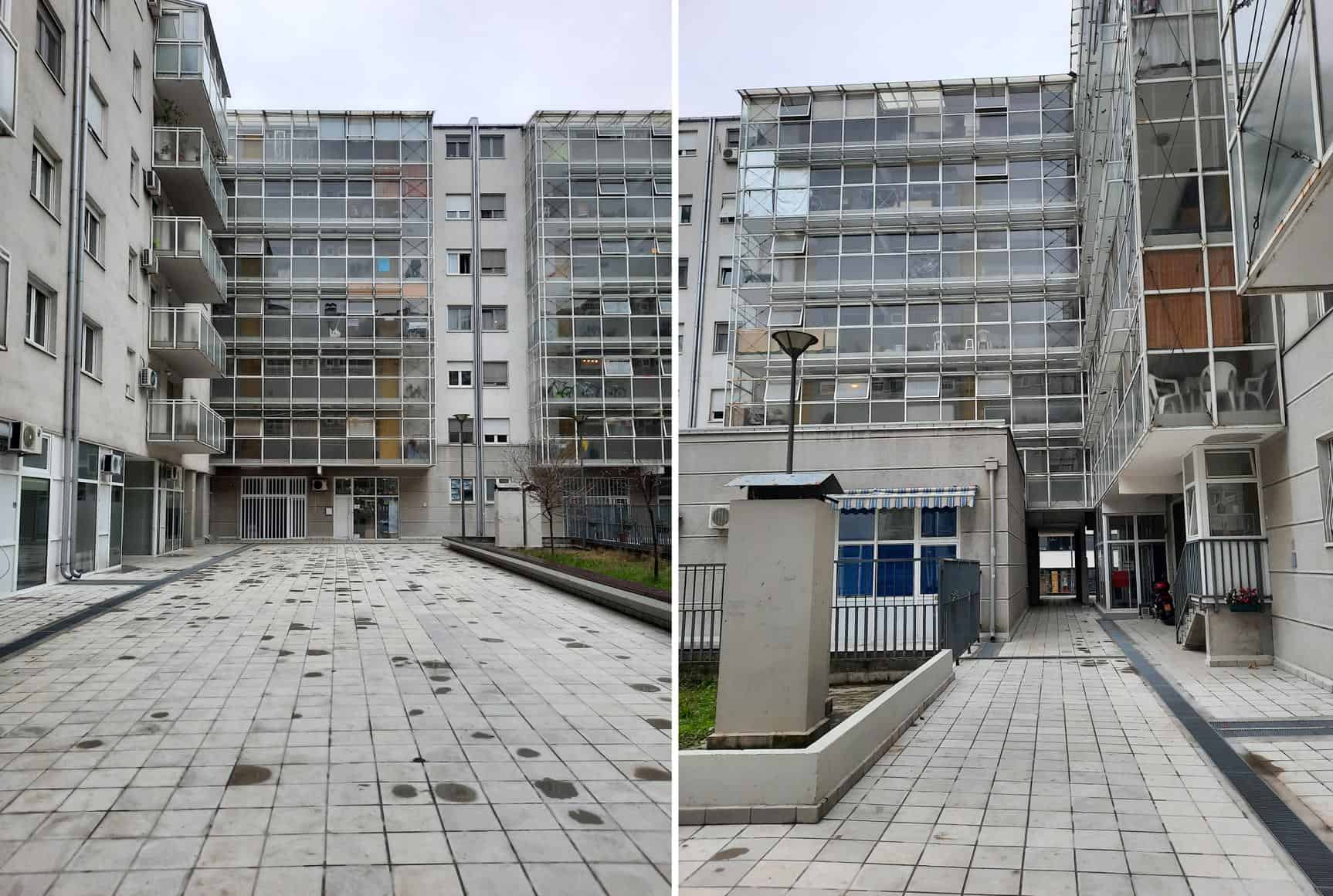
photography by: Omri Westmark
Vastly outshining its surroundings, the Western City Gate, unofficially known as Genex Tower (named after the state-owned company “Genex” which formerly resided at the building), is probably the most notable architectural icon throughout Novi Beograd.
Designed by the nationally renowned architect Mihajlo Mitrović in 1977 as a brutalist landmark, the building is divided into two sections, the taller of which is residential while the shorter one is designated for office space, both linked by a double-story bridge, and topped by a saucer shaped spire, where a revolving restaurant was supposed to serve clients, yet never actually operated.

photography by: Omri Westmark
Genex tower’s ground level is almost fully covered by myriads of murals and graffiti, somewhat contrasting its brutalist style, considered by many in Belgrade as an eyesore.

photography by: Omri Westmark
The unoccupied shorter section is regularly covered by a large advertisement poster, greeting commuters and pedestrians who make their way to the city from the west.
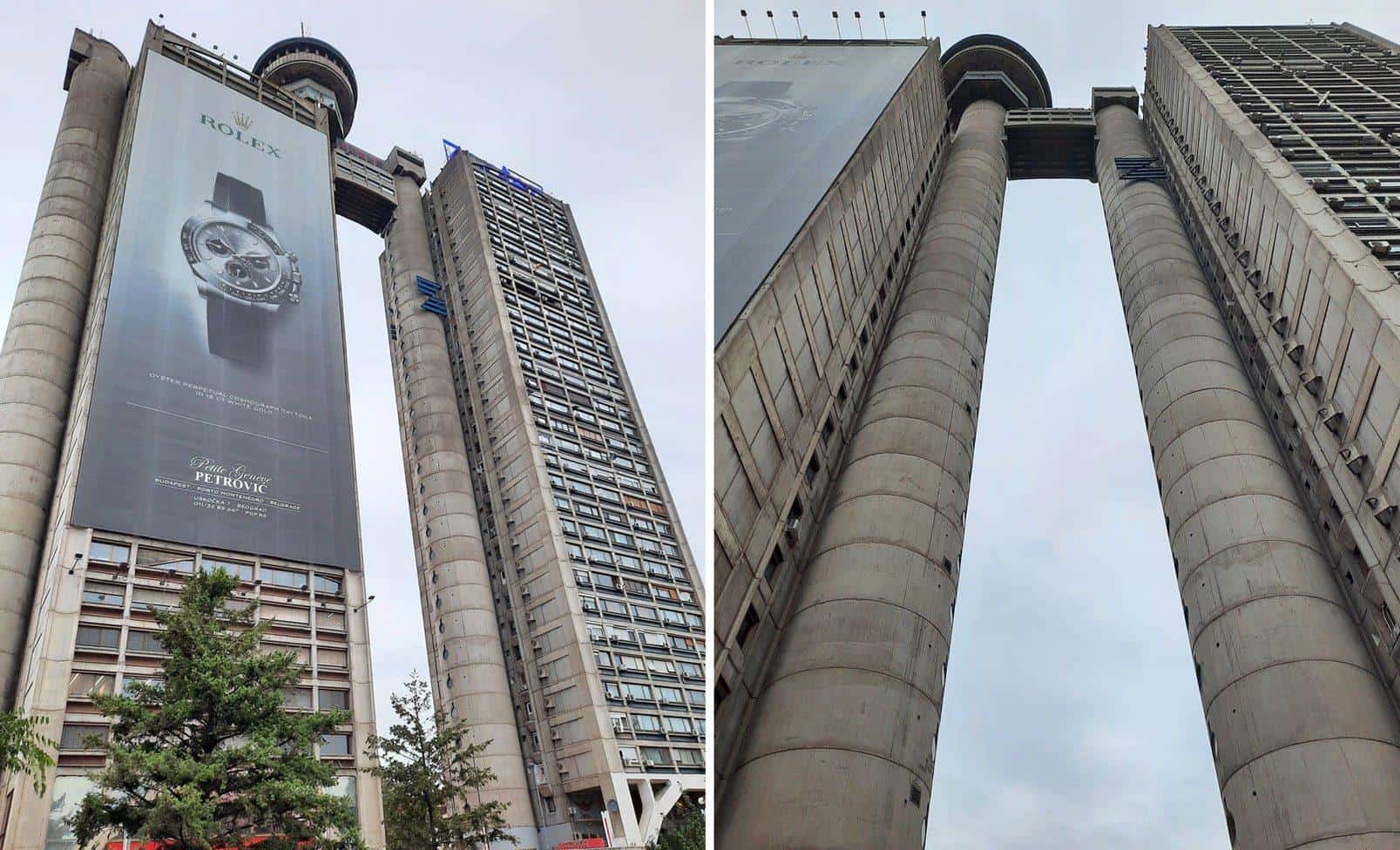
photography by: Omri Westmark
Inspired by Yugoslav style communism, Novi Beograd originally didn’t have any churches or other religious buildings, as the post-war socialist ideology served as sort of a religion by its own right.
However, following the dissolution of Yugoslavia this policy was revoked, prompting a Christian revival, evident by the recent construction of several churches around this part of the city, one of which is the Church of the Holy Great Martyr Dimitrije Solunski.
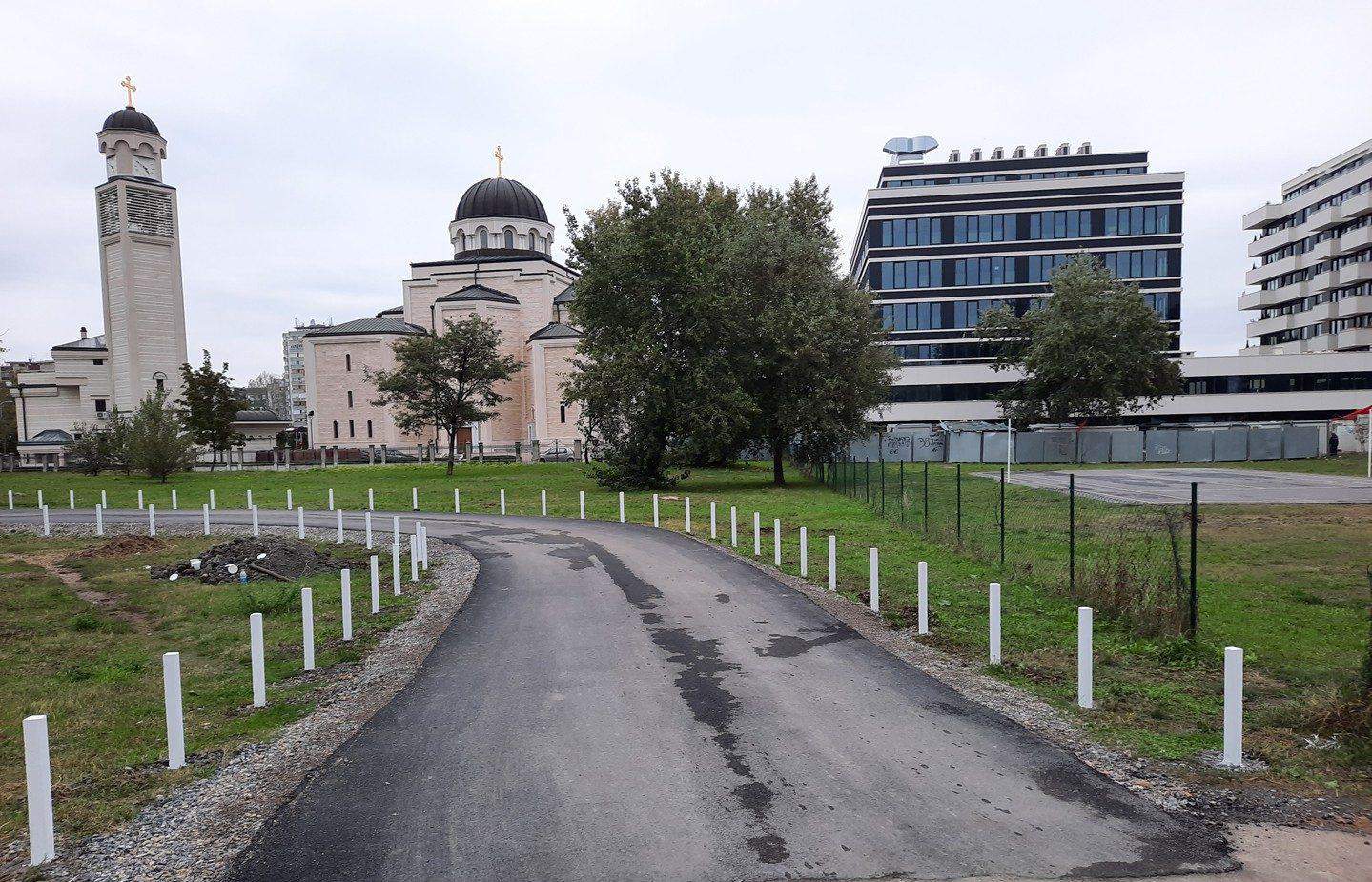
photography by: Omri Westmark
During the last decades, many public monuments and buildings were neglected due to a lack of funding, subsequently falling into decay. While some visitors might consider the crumbling architecture as grim, I would argue that it simply adds a rugged character that enriches a nondescript neighborhood.

photography by: Omri Westmark
In recent years, many fashionable cafés have popped out along the main streets, completely defying the area’s drab image.
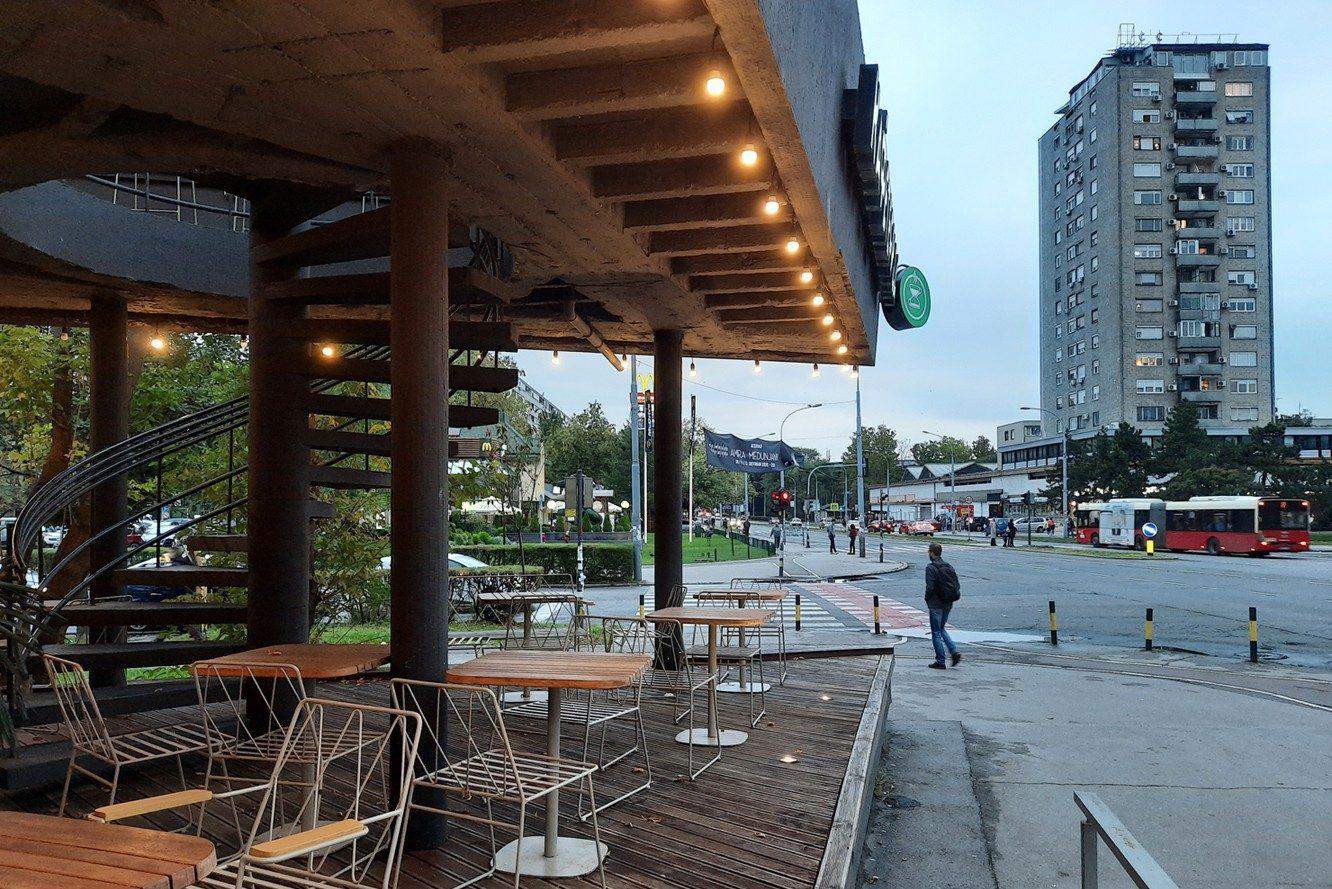
photography by: Omri Westmark
Perhaps the most striking icon of the paradigm shift from hardcore communism to full-scale consumerism is this McDonald’s restaurant, serving as a local pilgrimage site for many enthusiasts and hungry passersby alike.
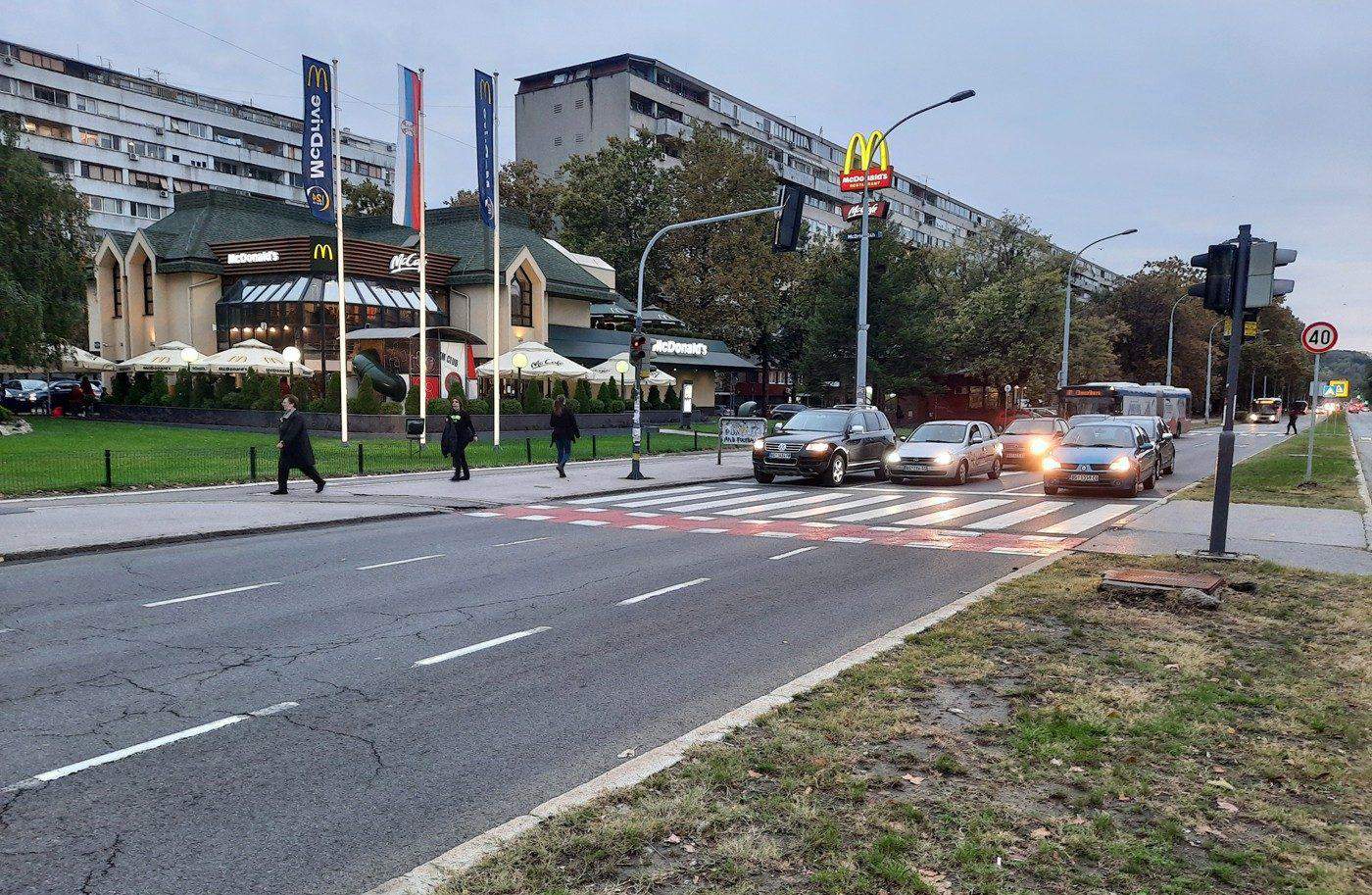
photography by: Omri Westmark
It might be a cliché, but markets are probably one of the greatest gateways into a culture, encompassing far greater aspects than just grocery shopping, that couldn’t be truer when it comes to Kalenić farmers market. Nestled between Maksima Gorkog and Njegoševa streets, the triangular market is home to a medley of stalls, selling everything from clothes and household items to fresh agricultural produce, and a small hall housing the dairy and meat sections.
Interestingly, many of the shoppers regularly come to the same vendors, sometimes for years upon years, often holding conversations about their daily routines just like old-time friends.
Whereas markets generally don’t tend to be a sterile environment, the peddlers in Kalenić market generously encourage customers to touch, feel and even taste their fruits and vegetables, making it a multi-sensory experience.
The market’s main part is the maze between the dozens of small stalls, many of which are manned by farmers who sell their own fresh and authentic produce. Besides fruits and vegetables, you can also find here honey, local alcoholic drinks and even flowers.
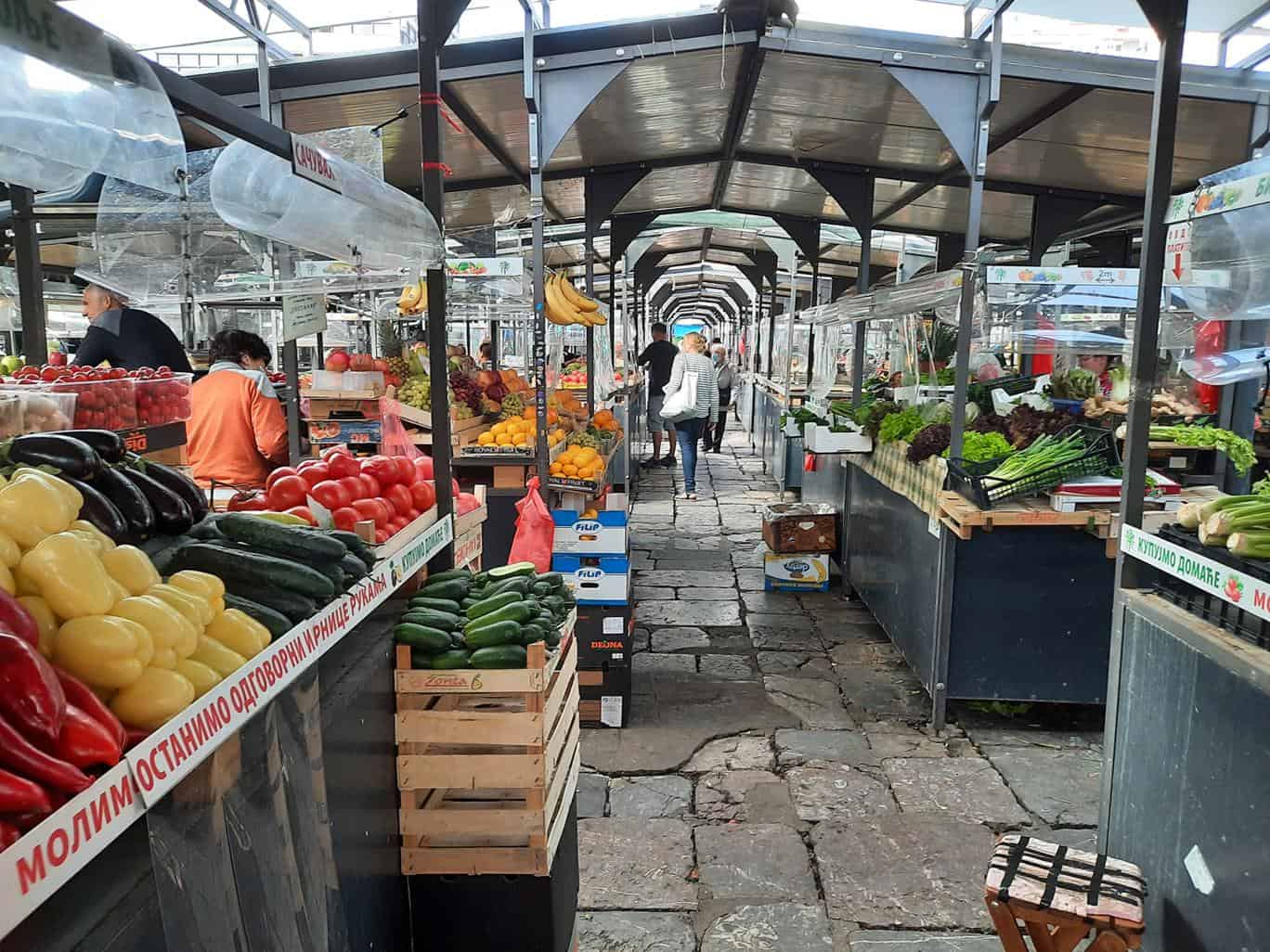
photography by: Omri Westmark
One of the best stands at the market is this one, owned by an adorable lady who offers free sampling and a lot of smiles. The booth is crammed full with freshly picked nuts, dried cheeses and local jams, but her best seller is undoubtedly the honey-soaked and sun-dried plums, not be missed.

photography by: Omri Westmark
The best time to visit the market is before 14:00 when most stalls are still packed with fresh produce, like this one selling heavenly berries, where flavor-rich blueberries and raspberries are sold for ridiculously cheap prices.
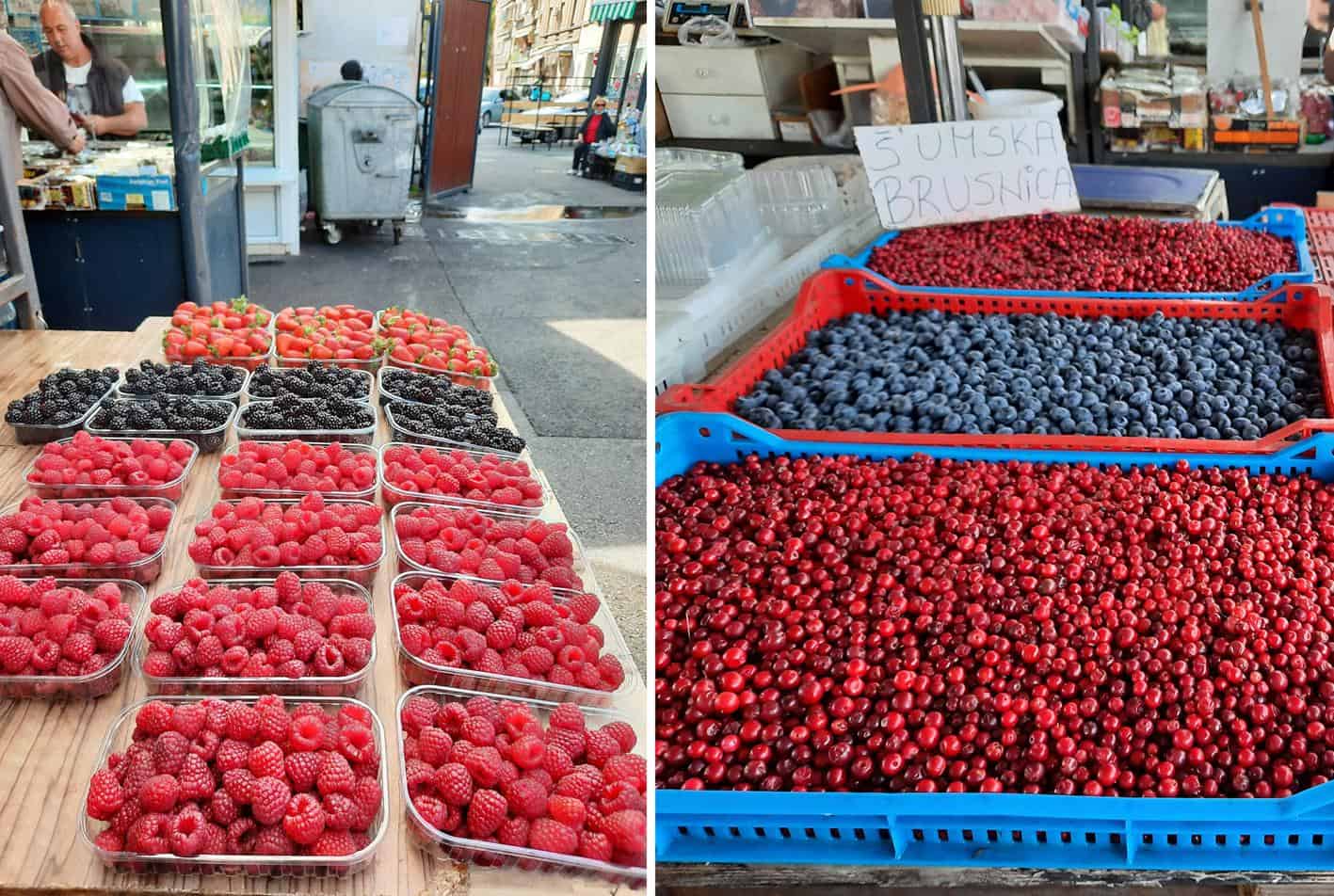
photography by: Omri Westmark